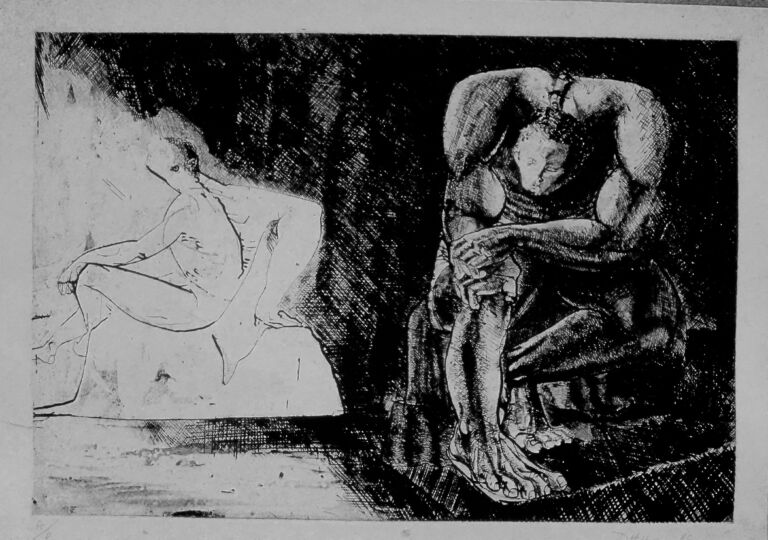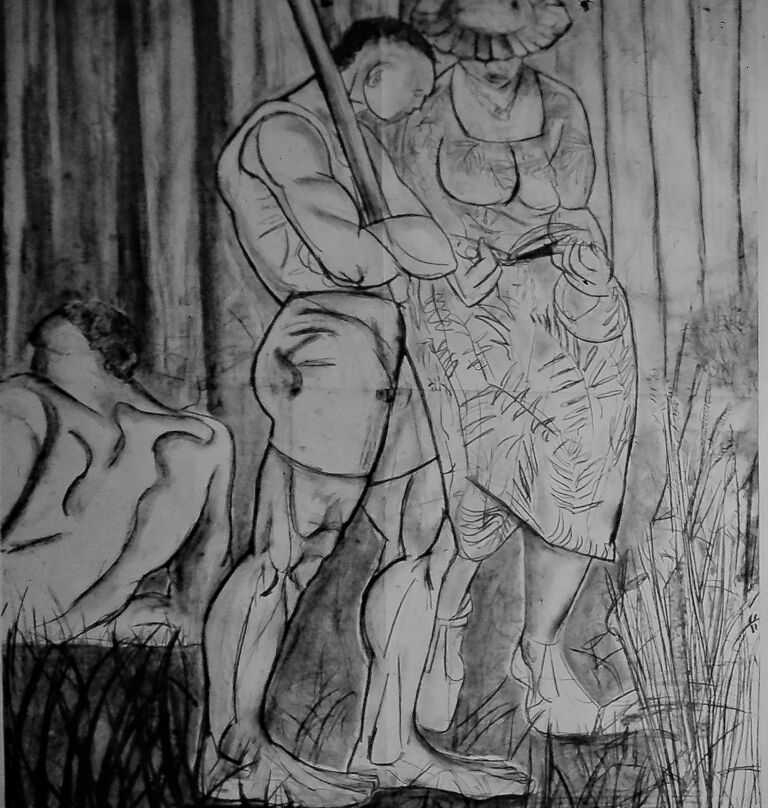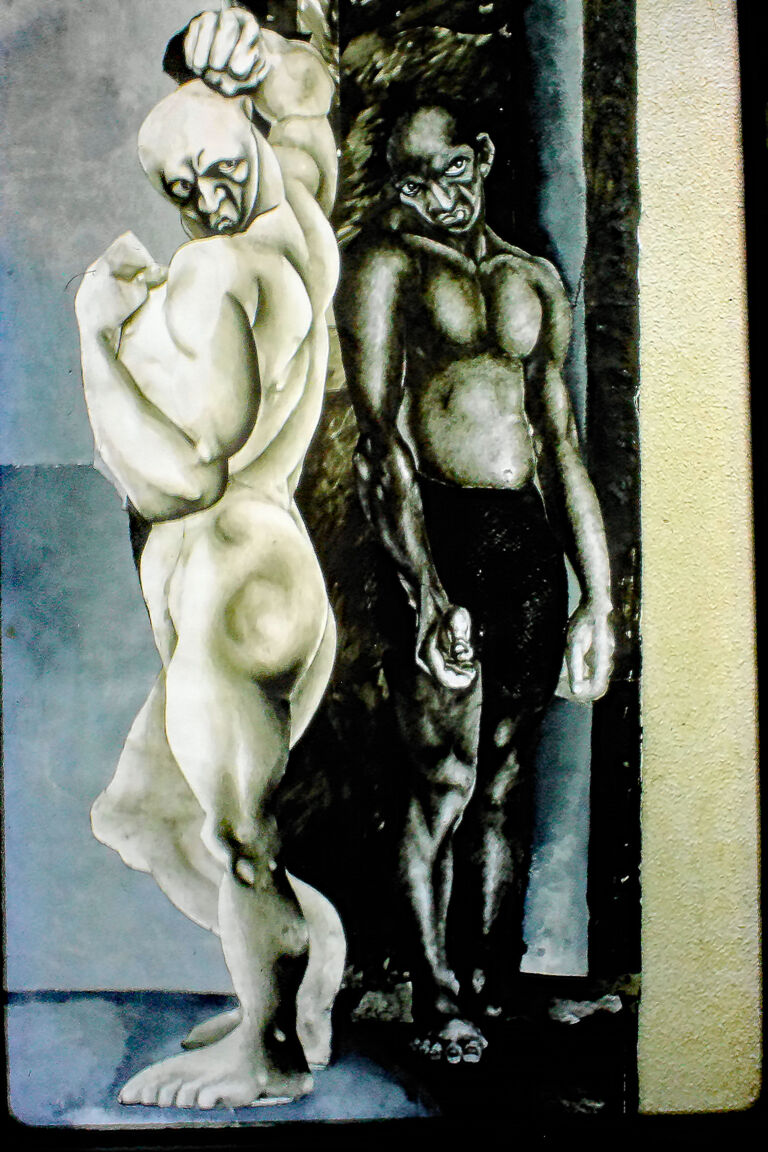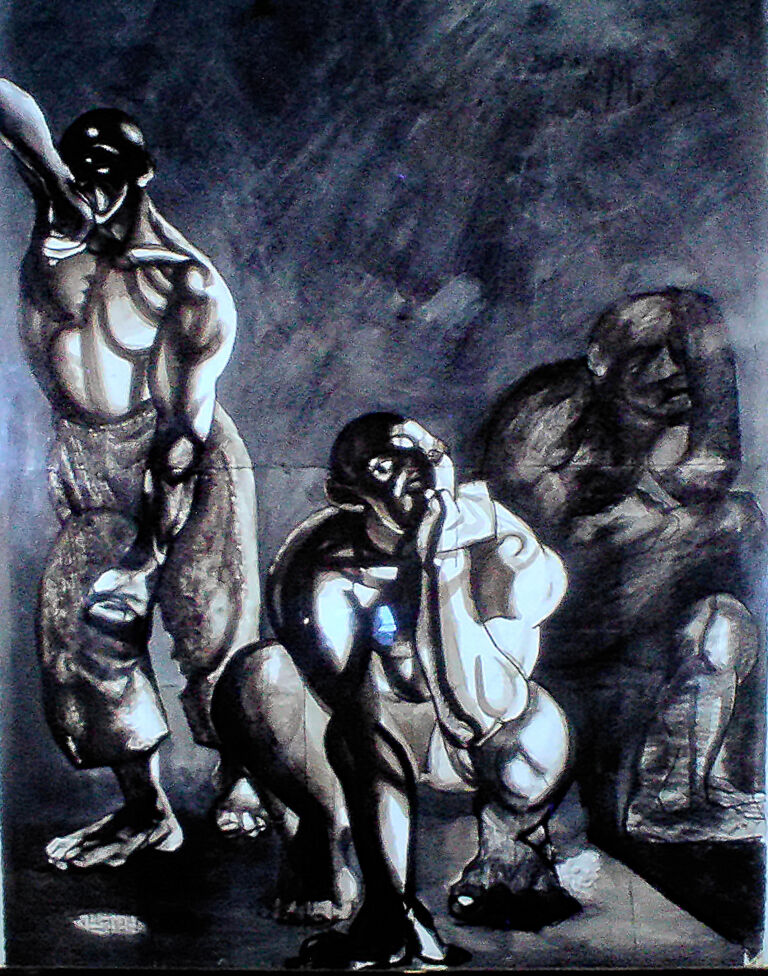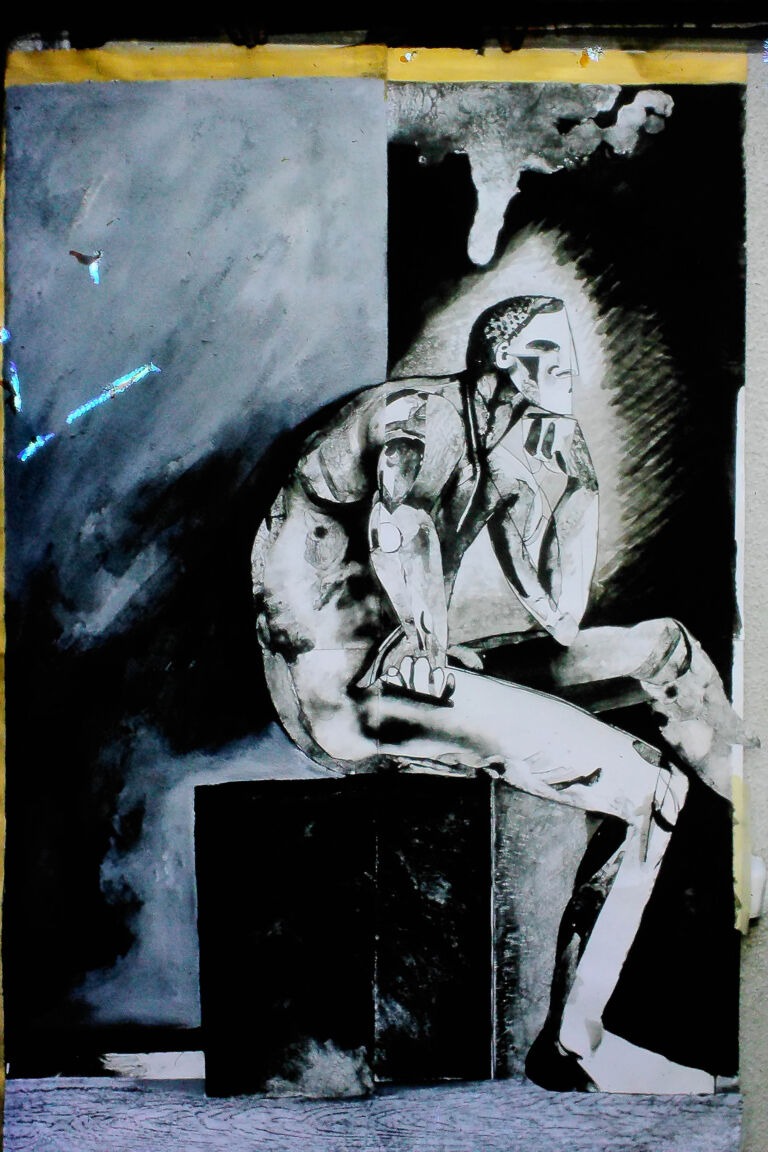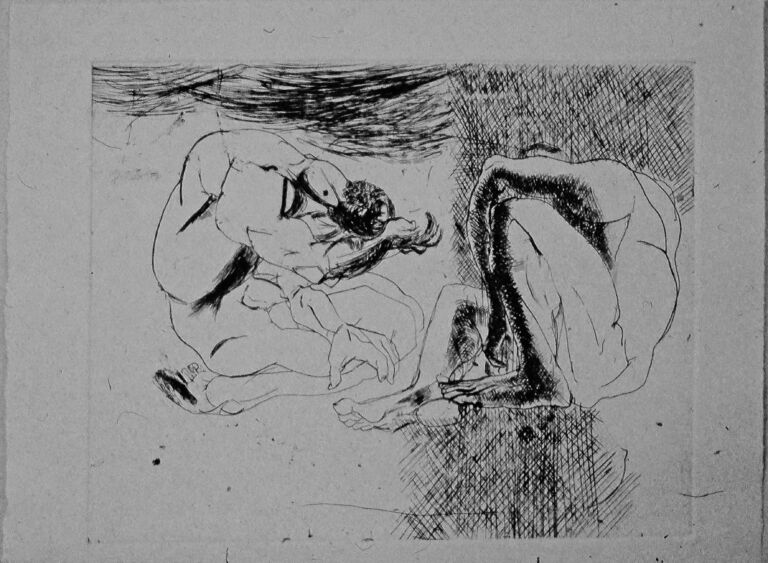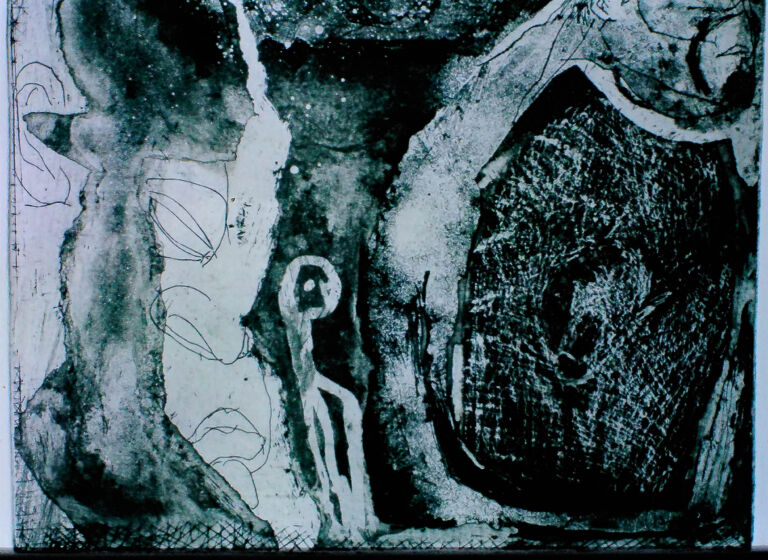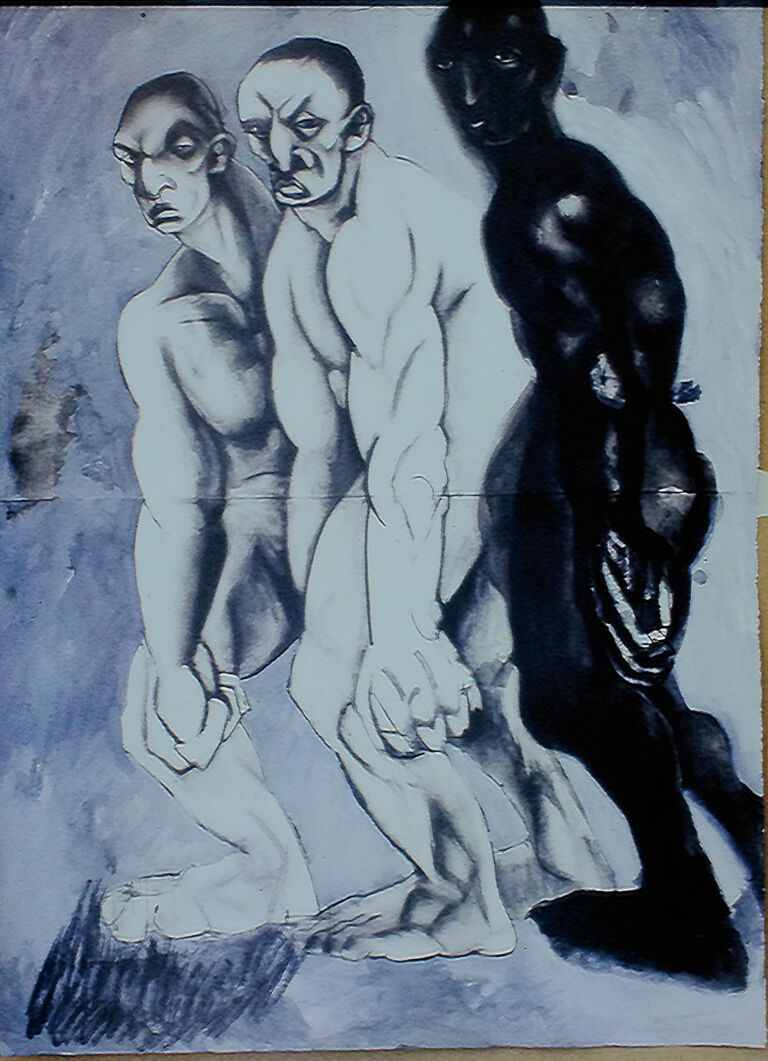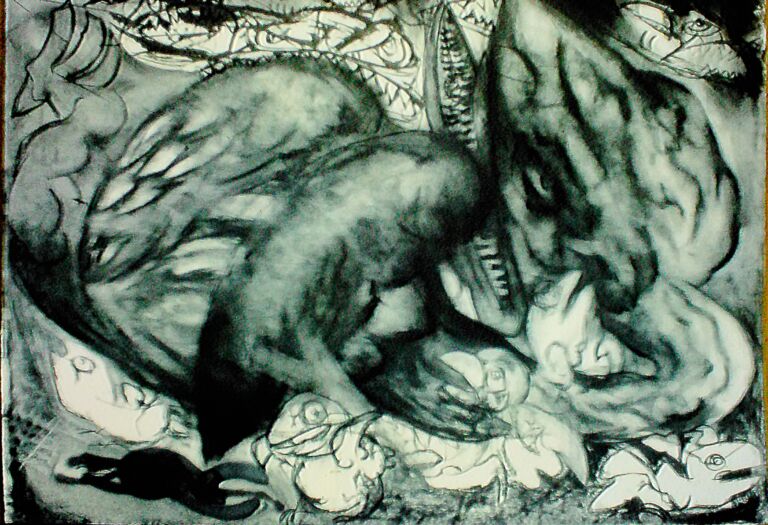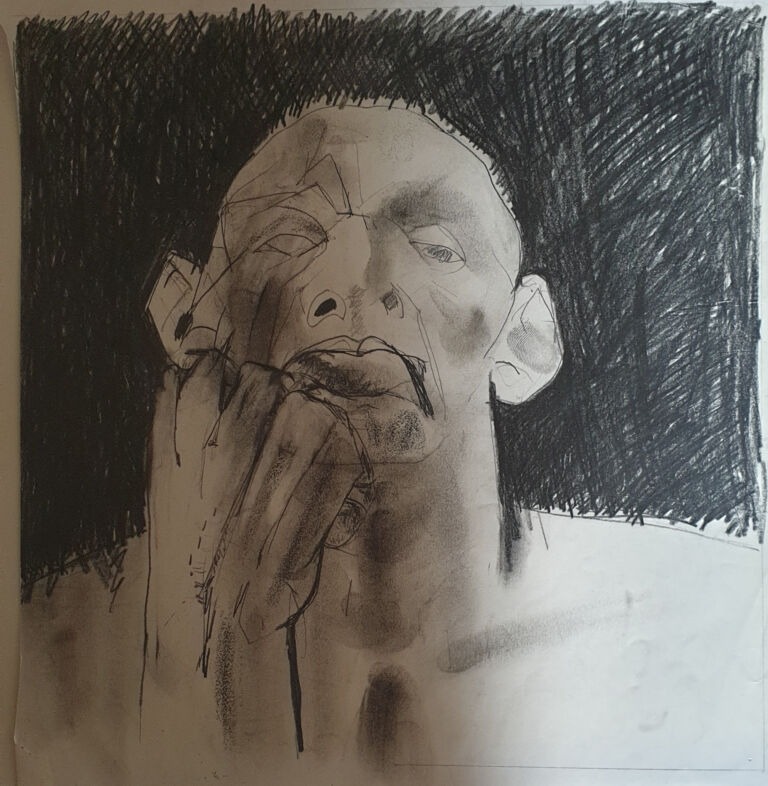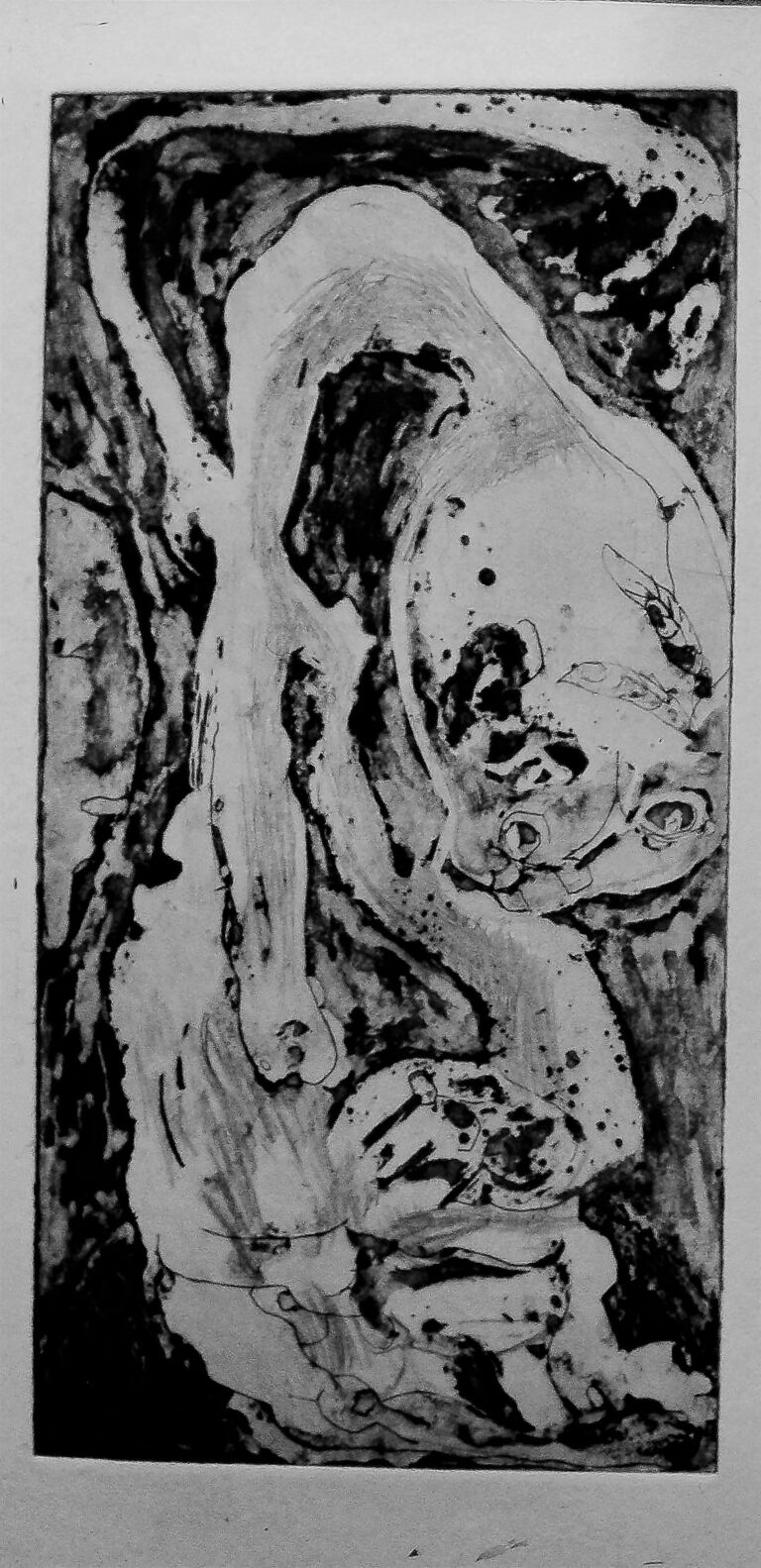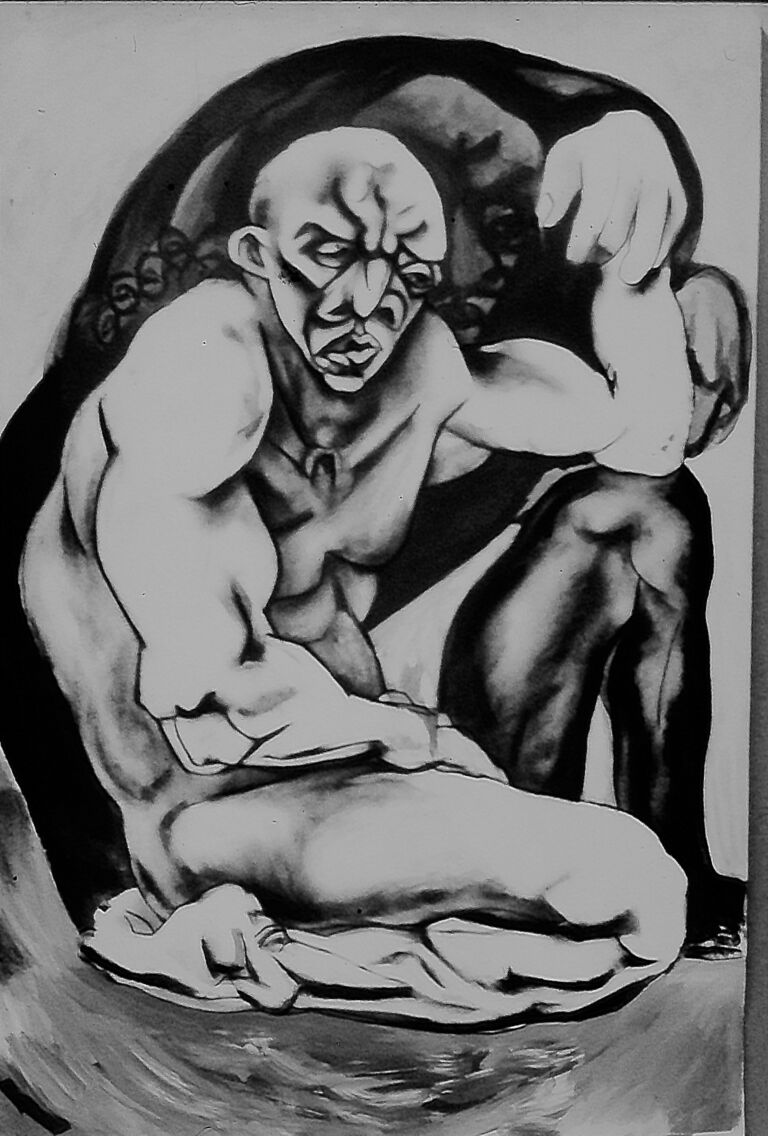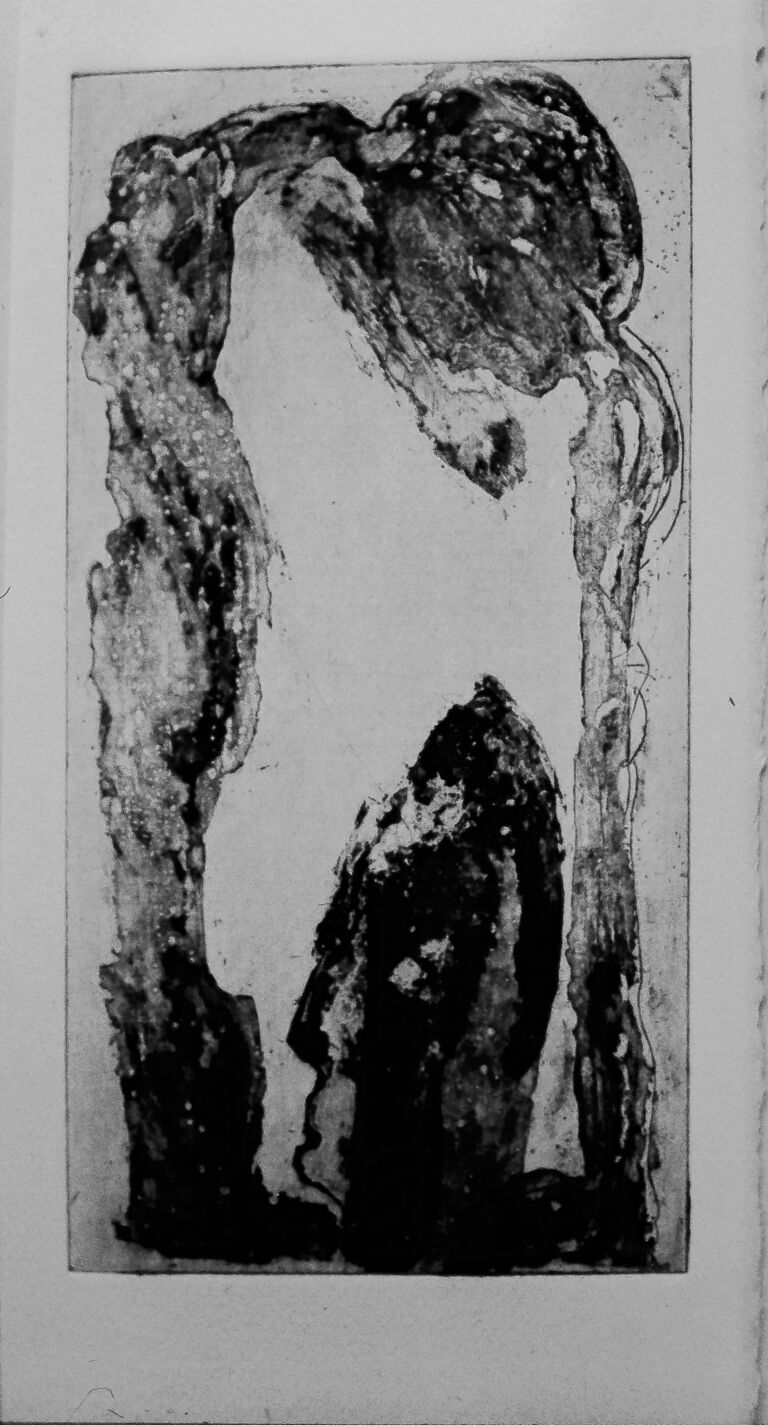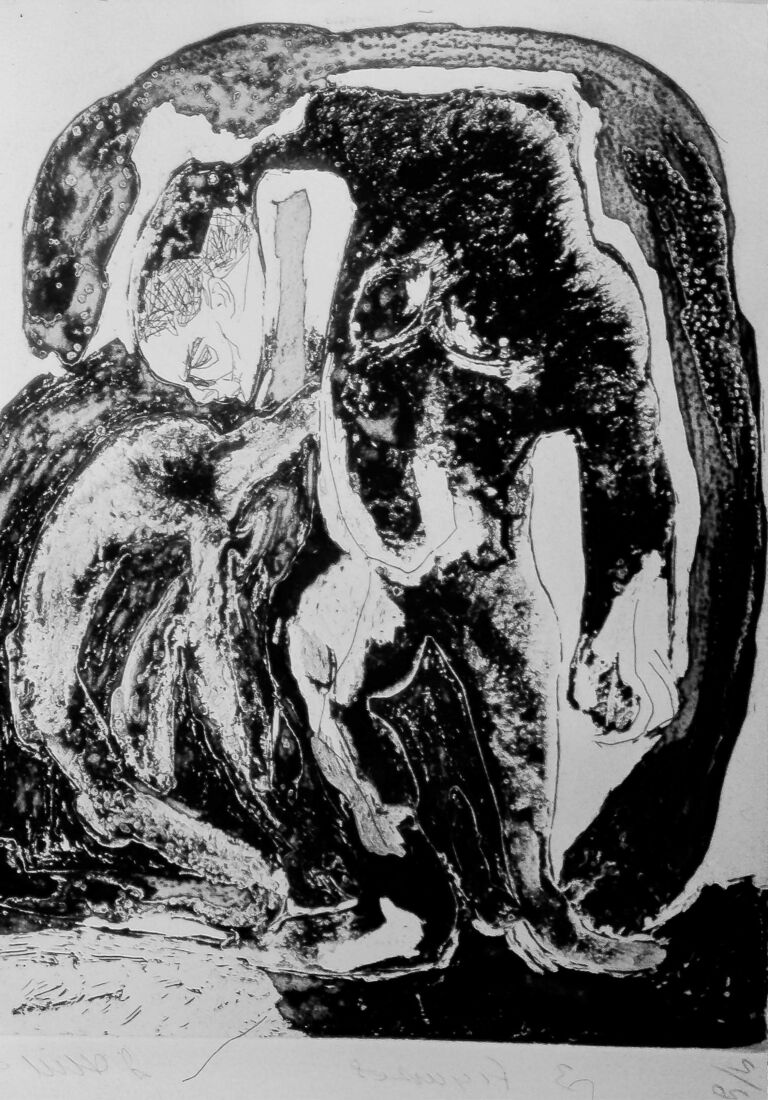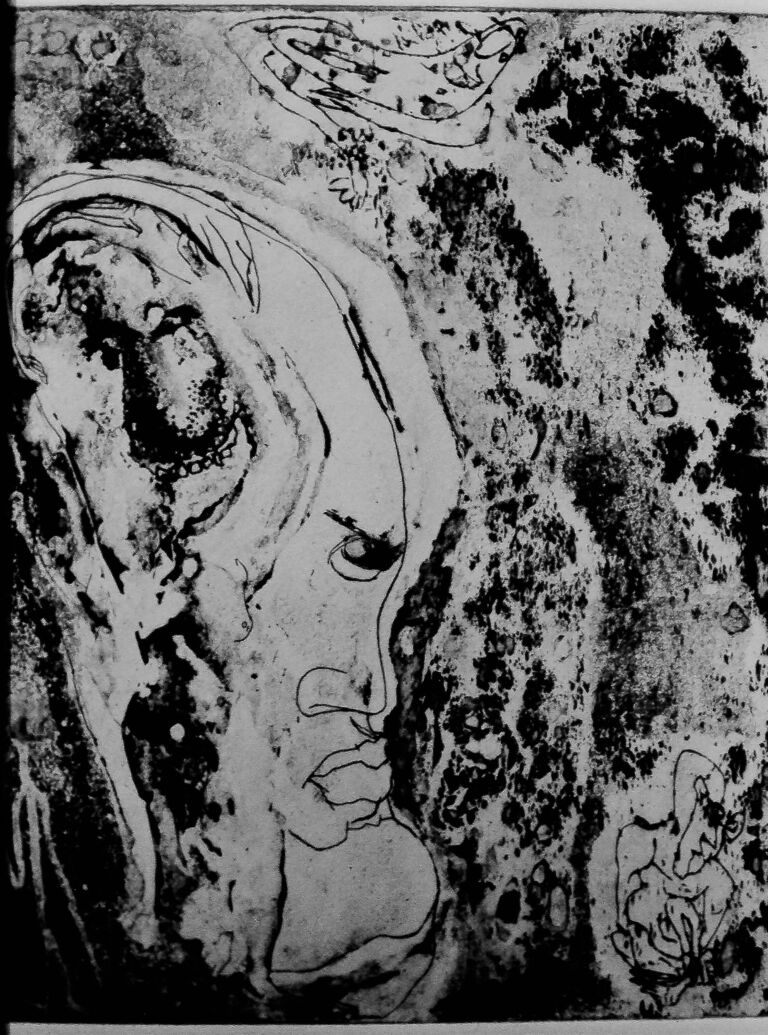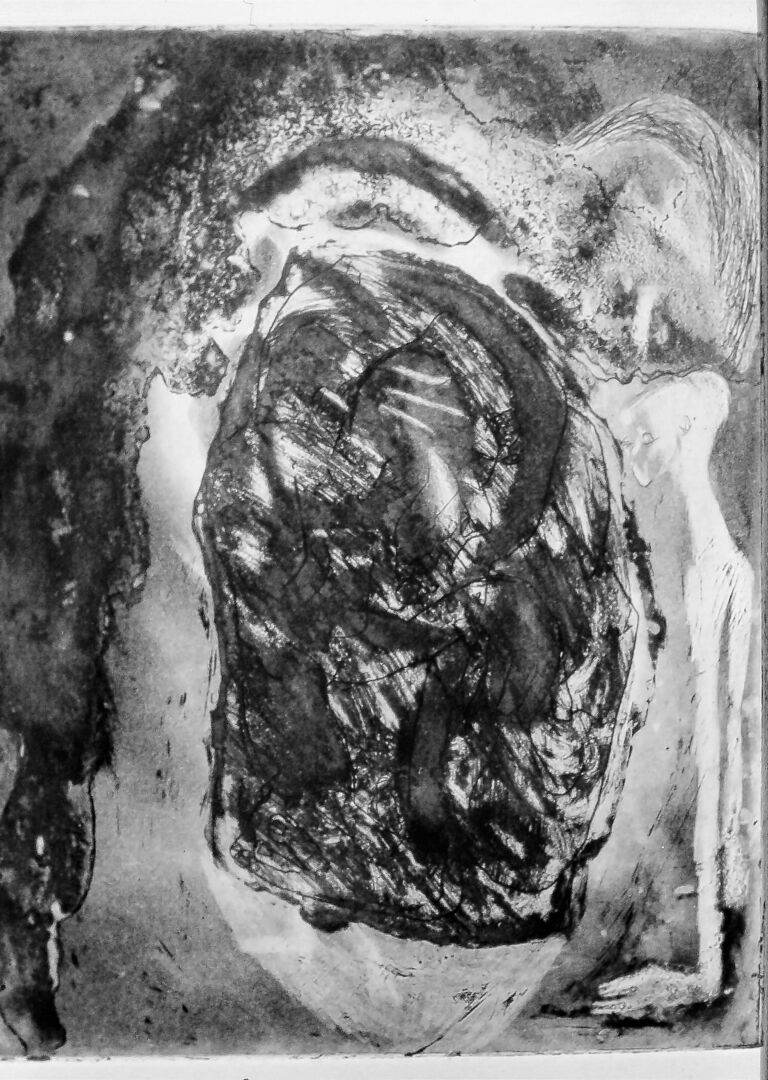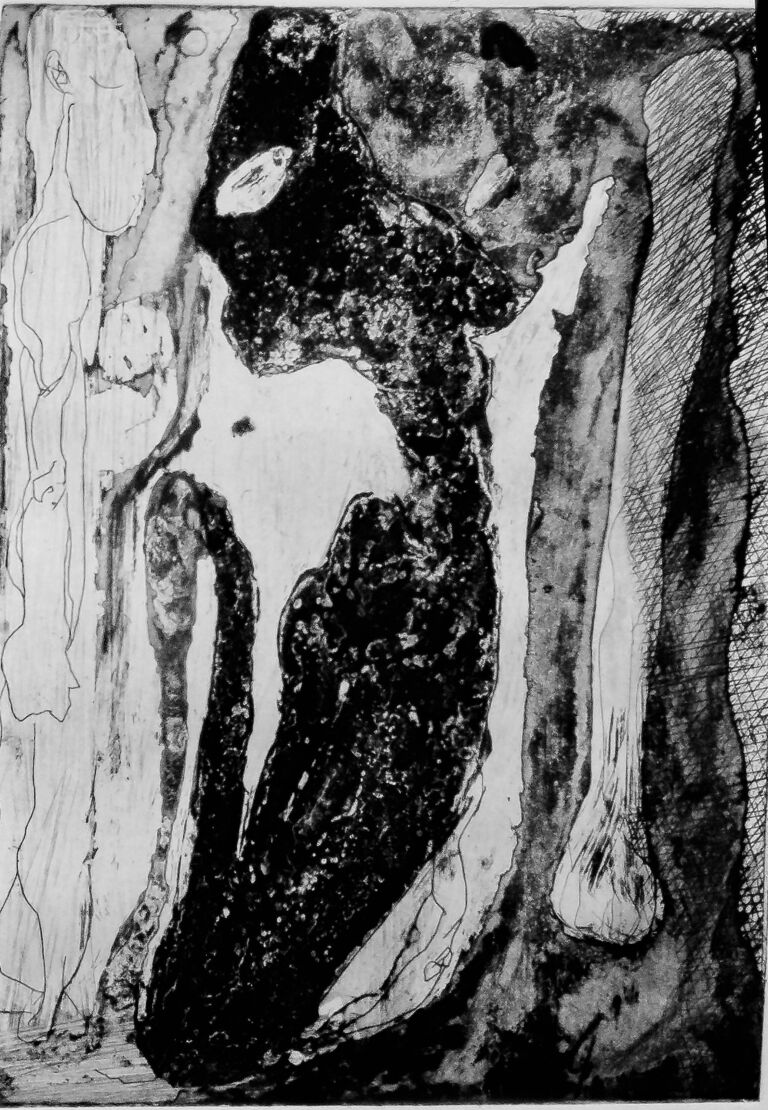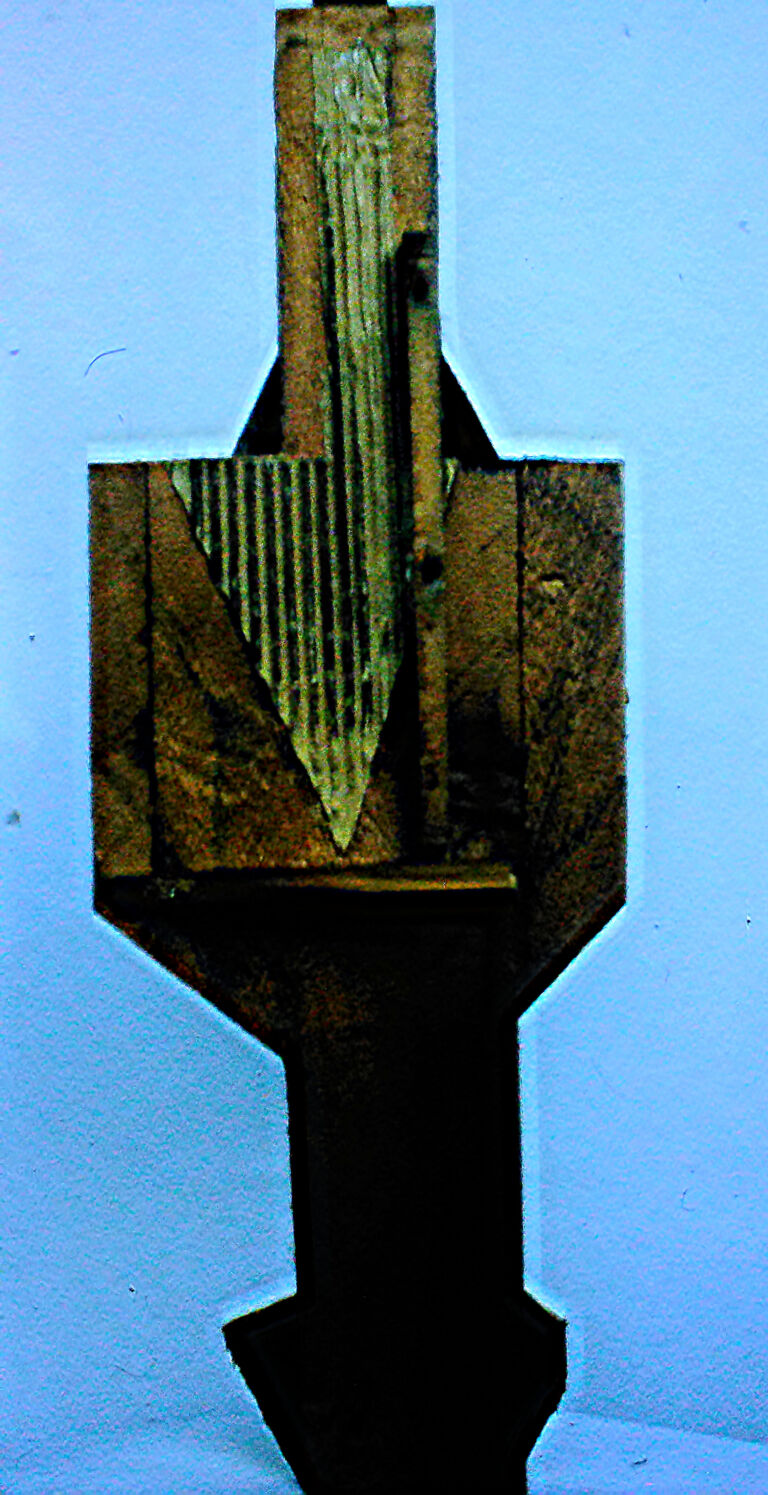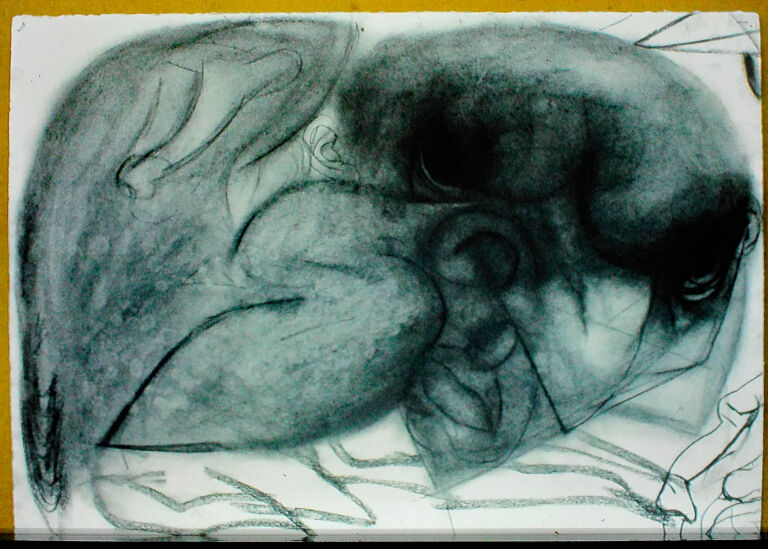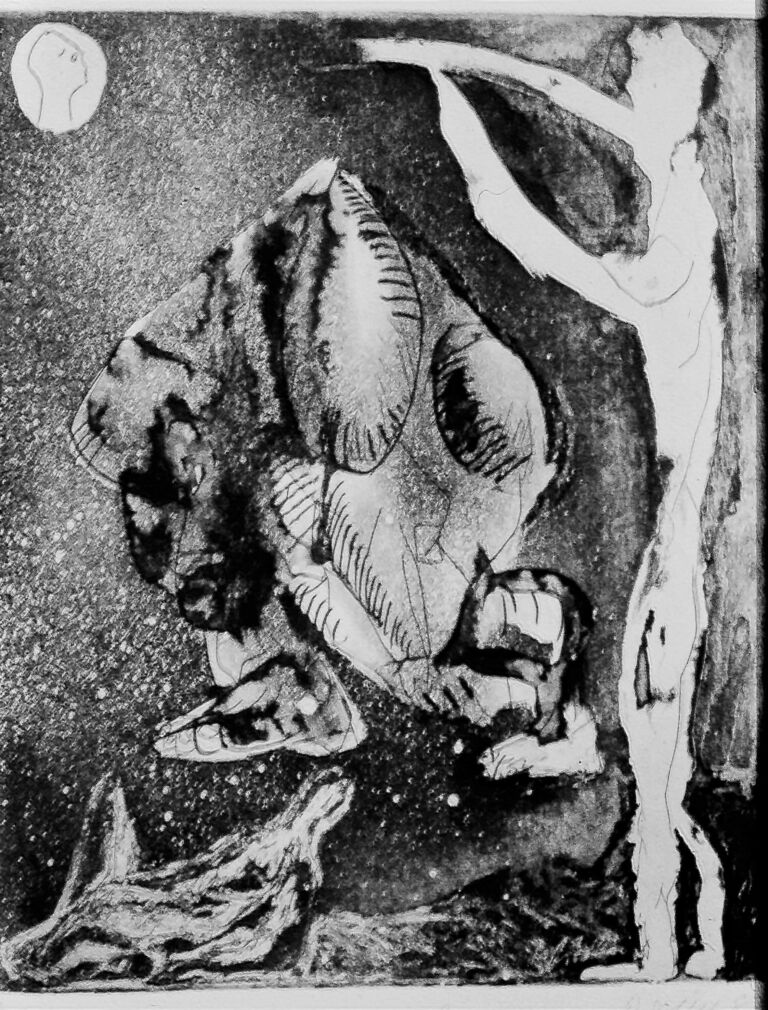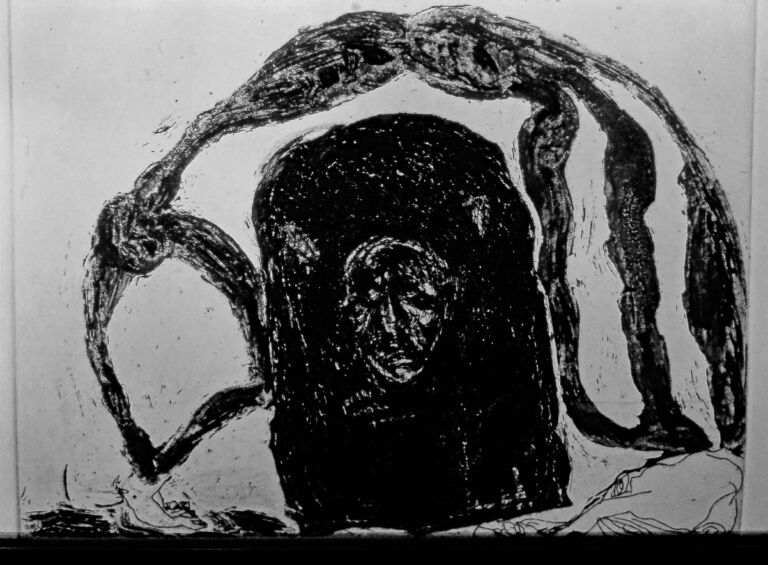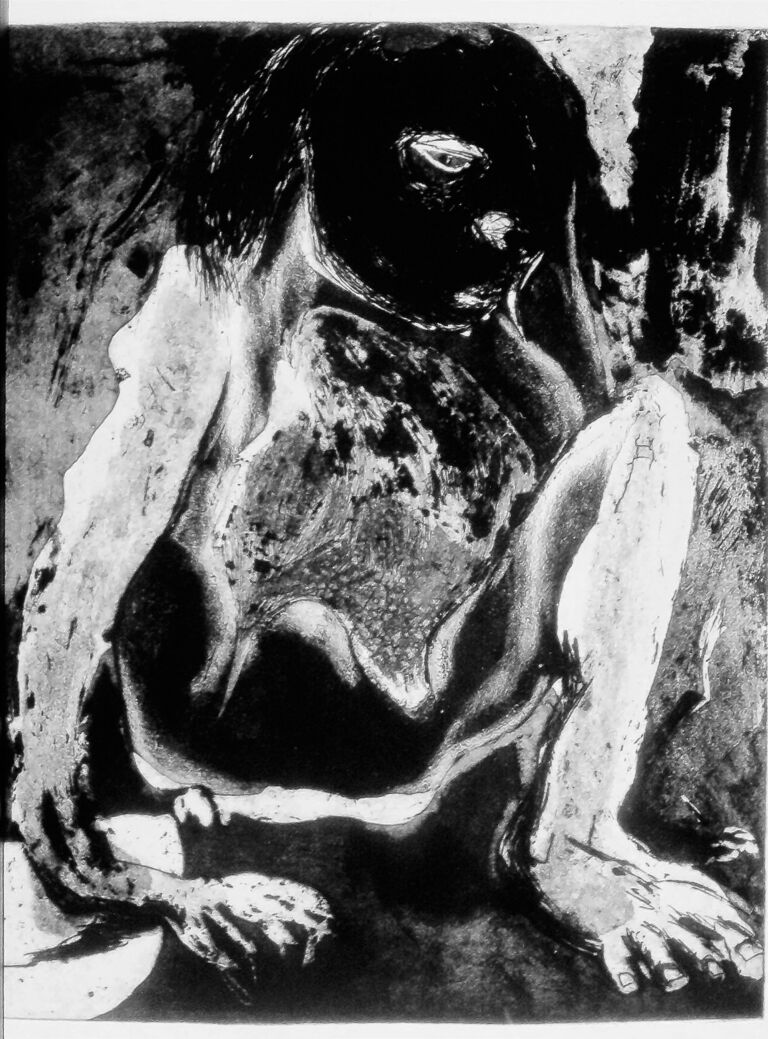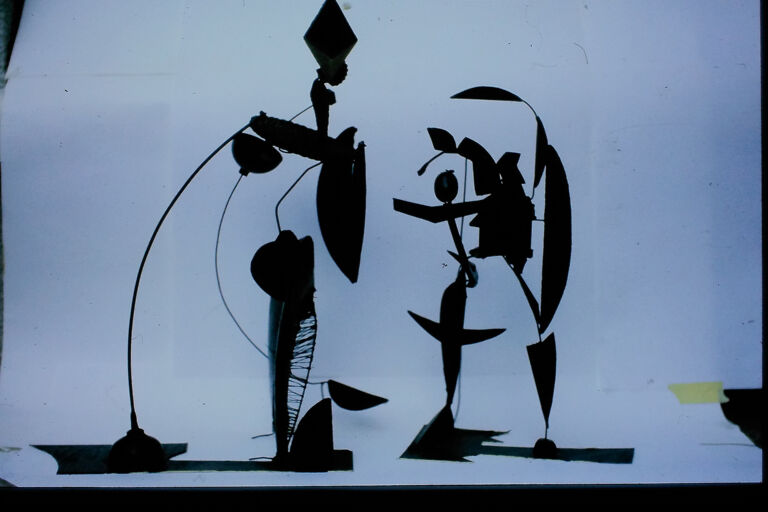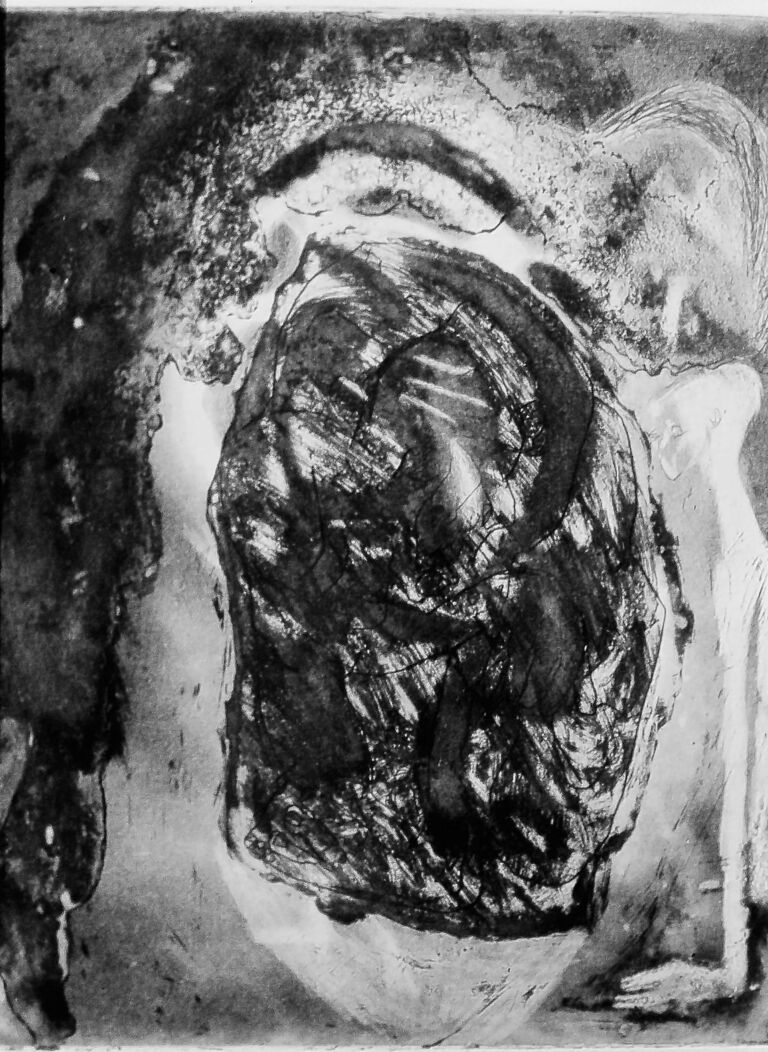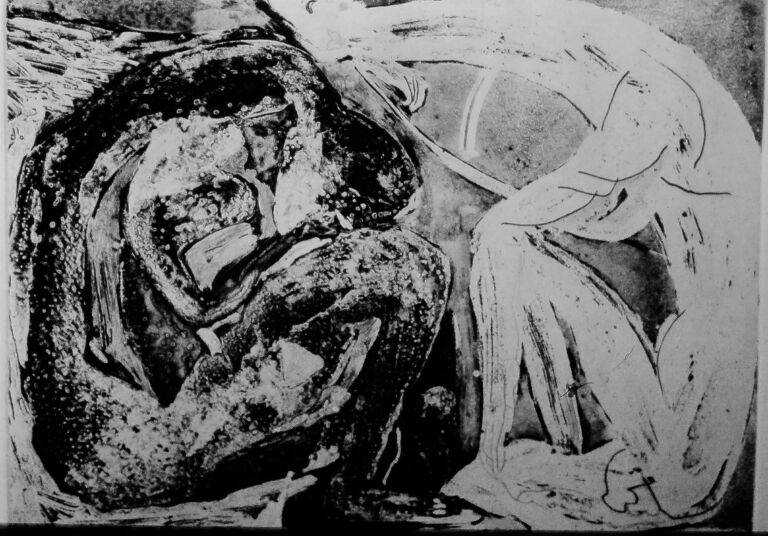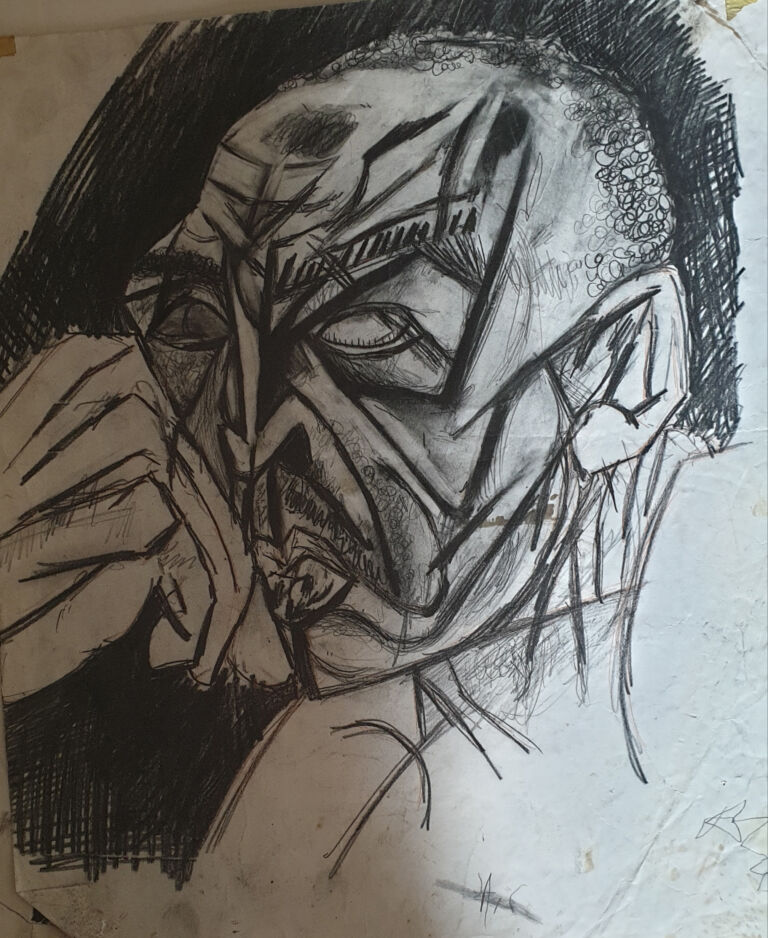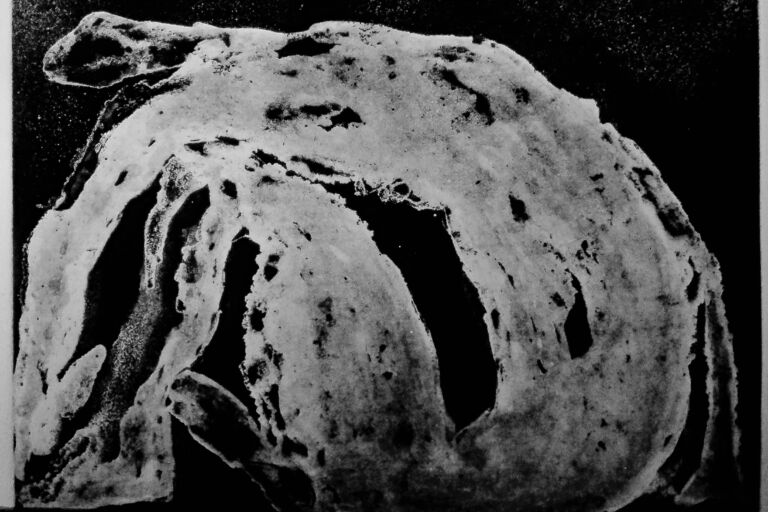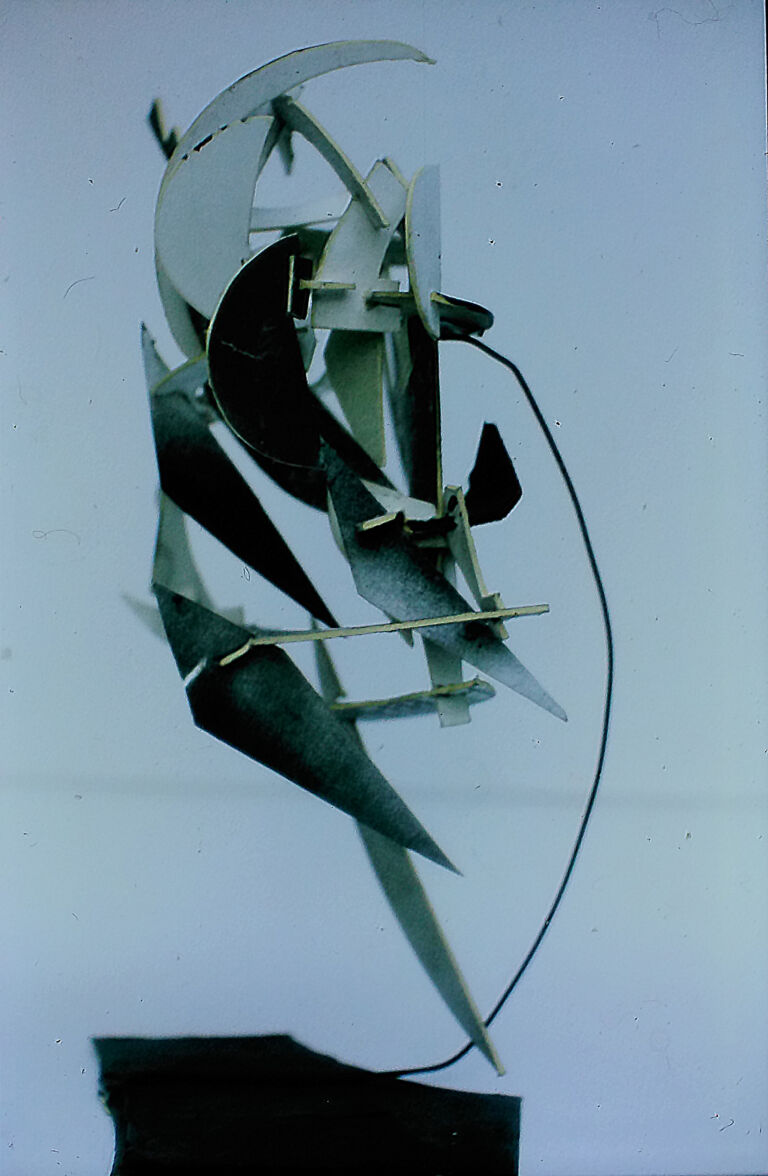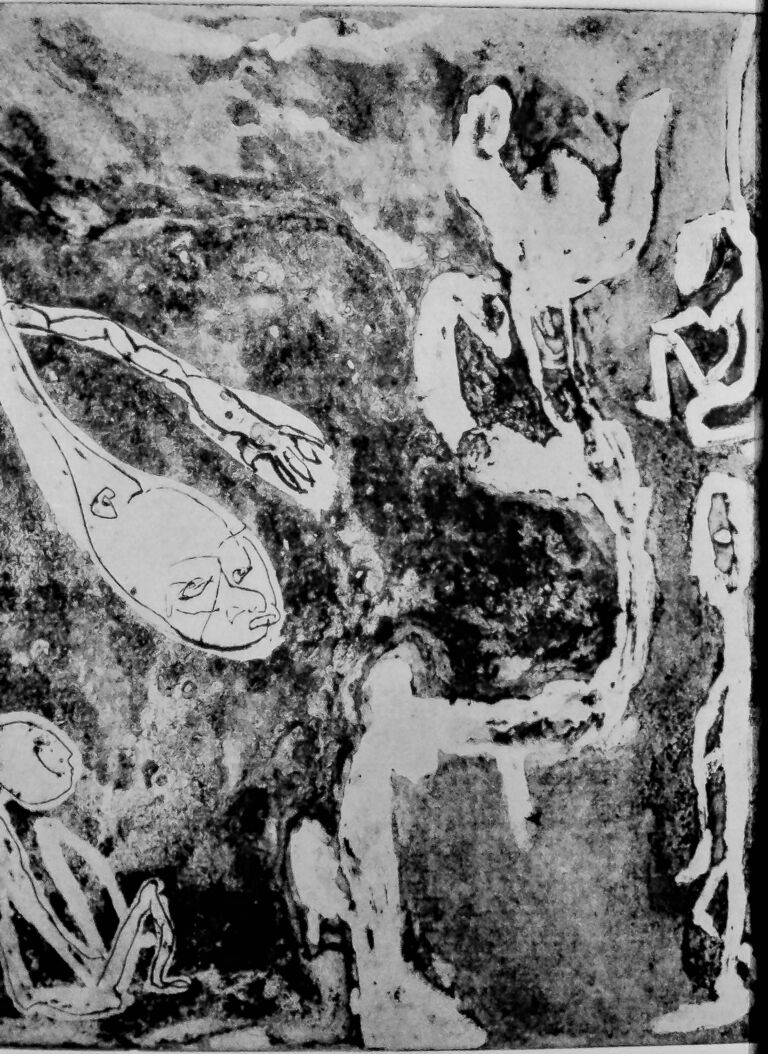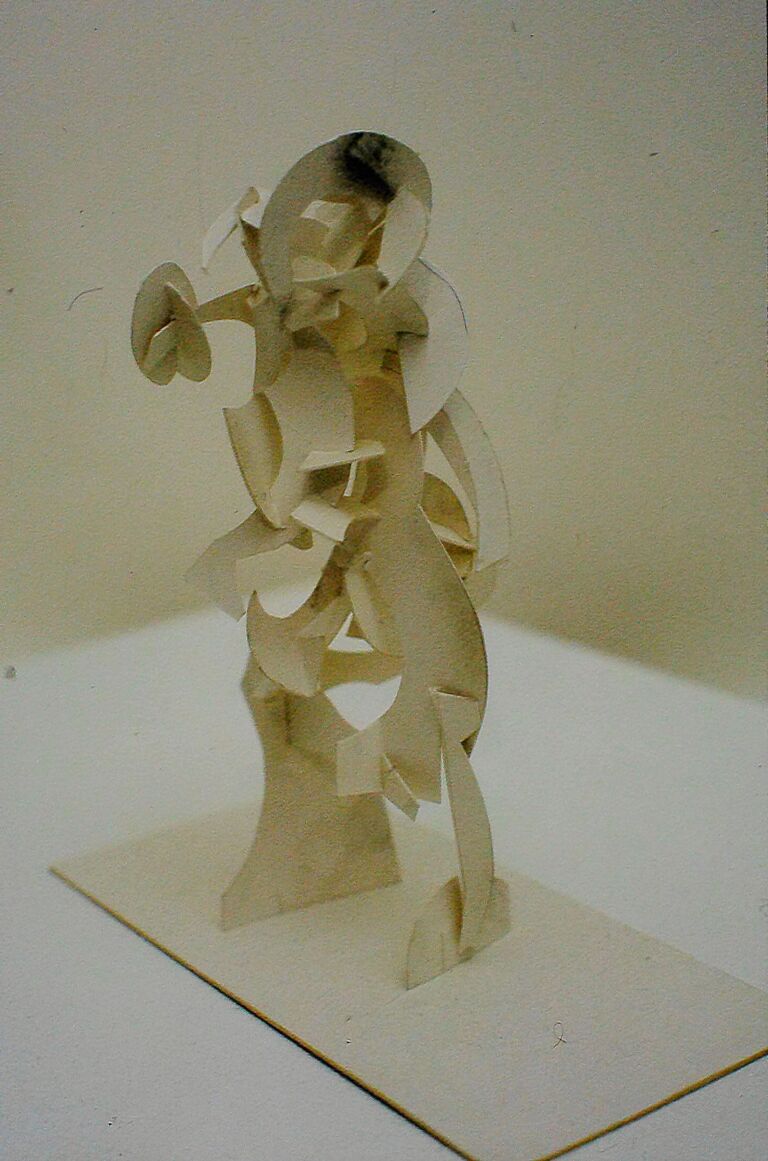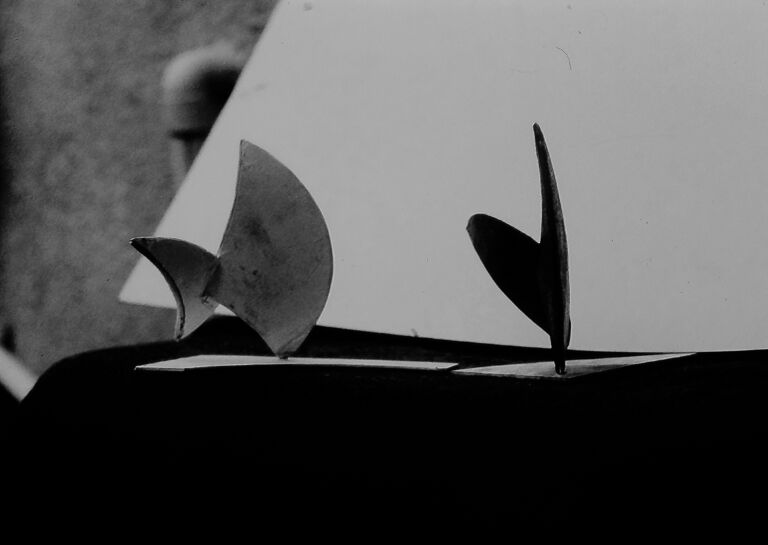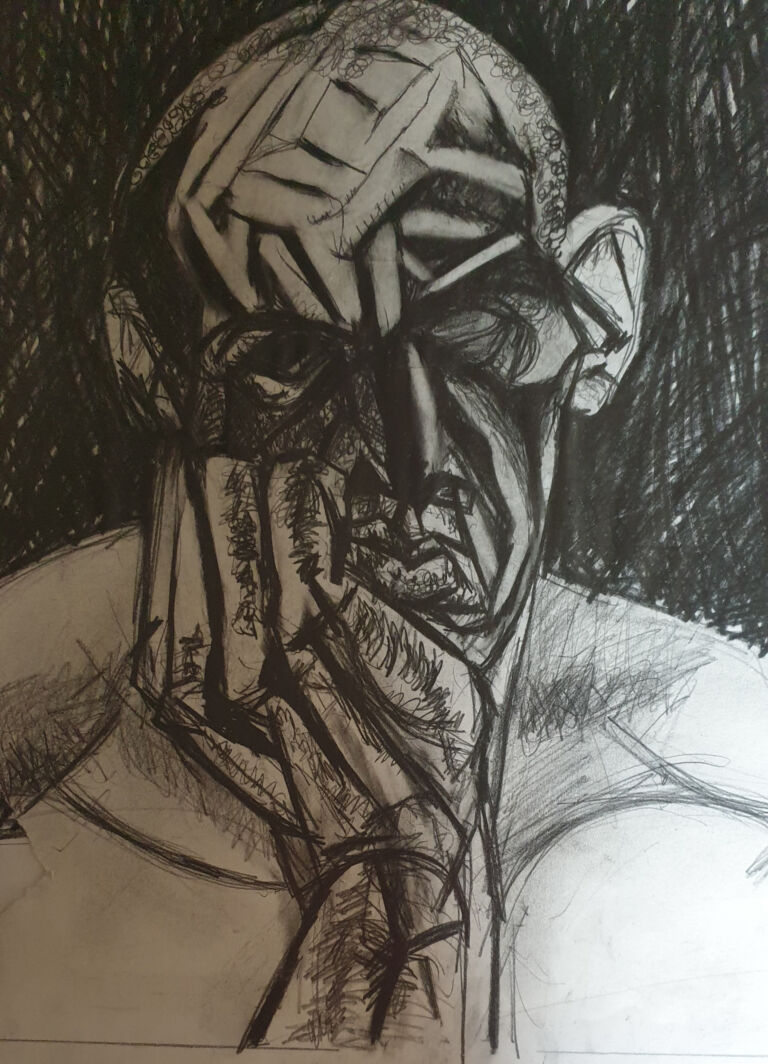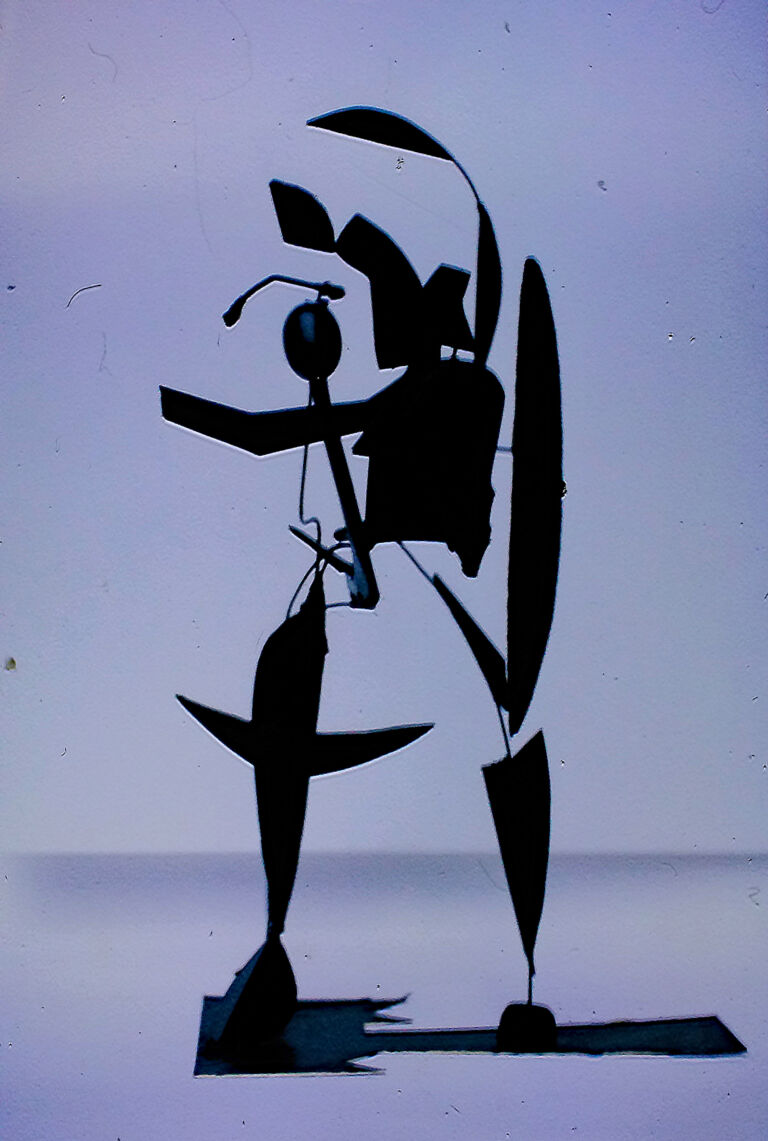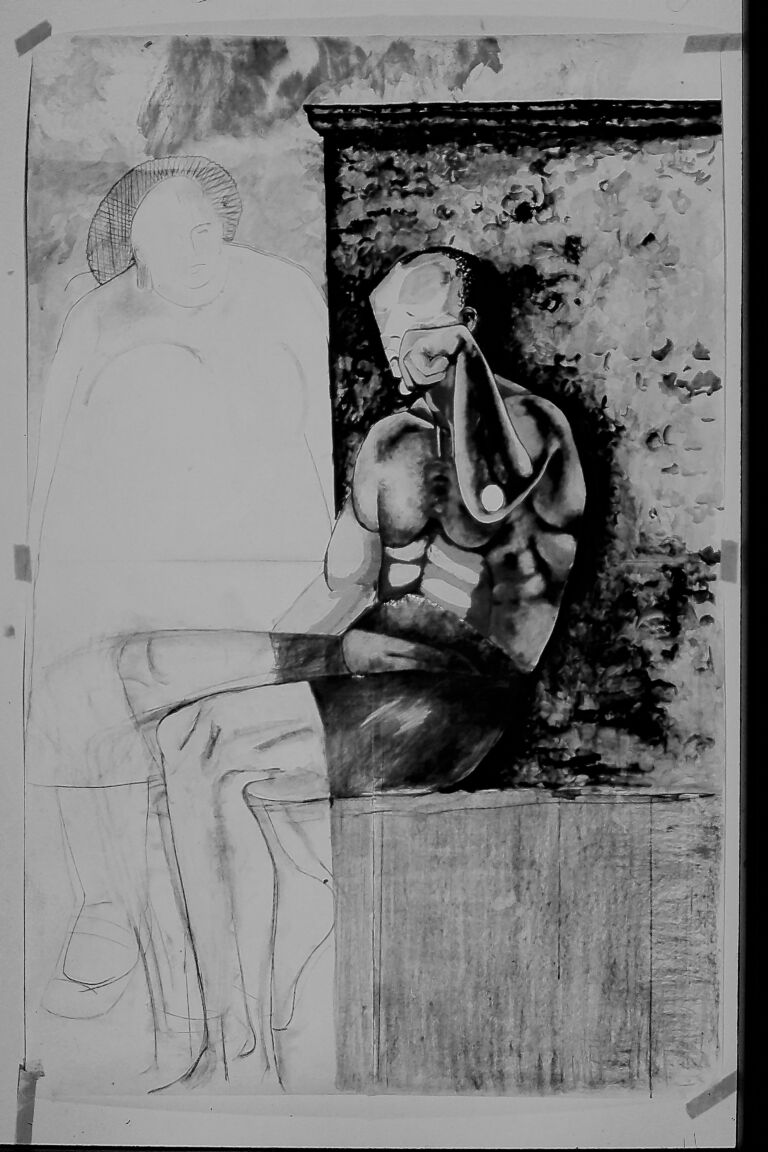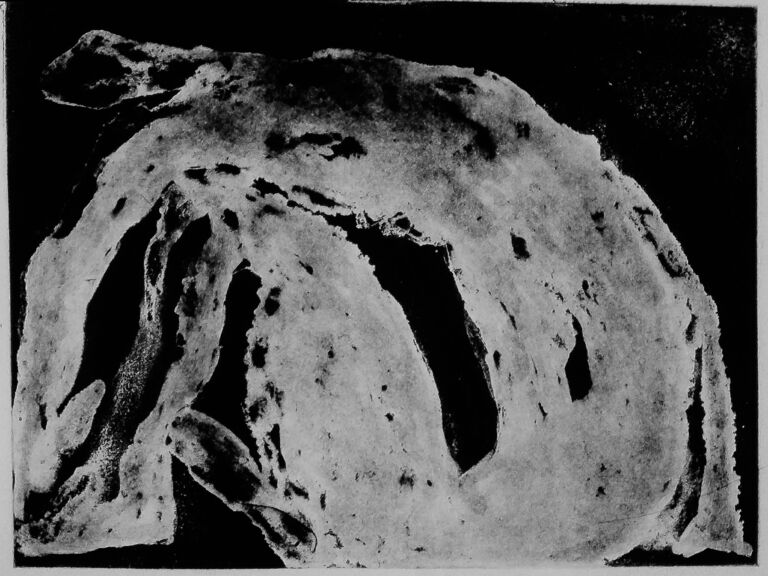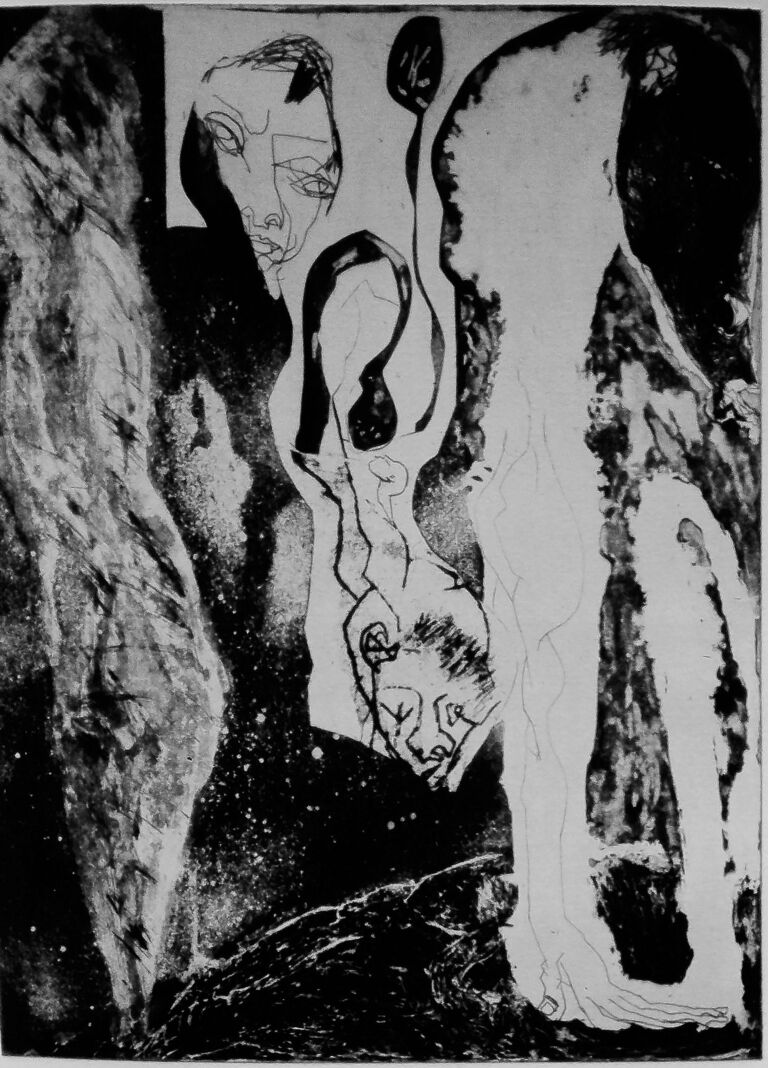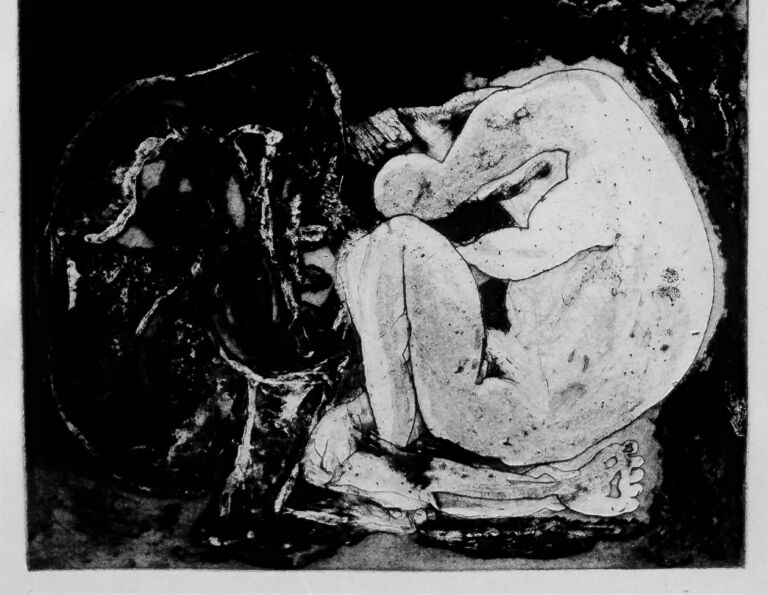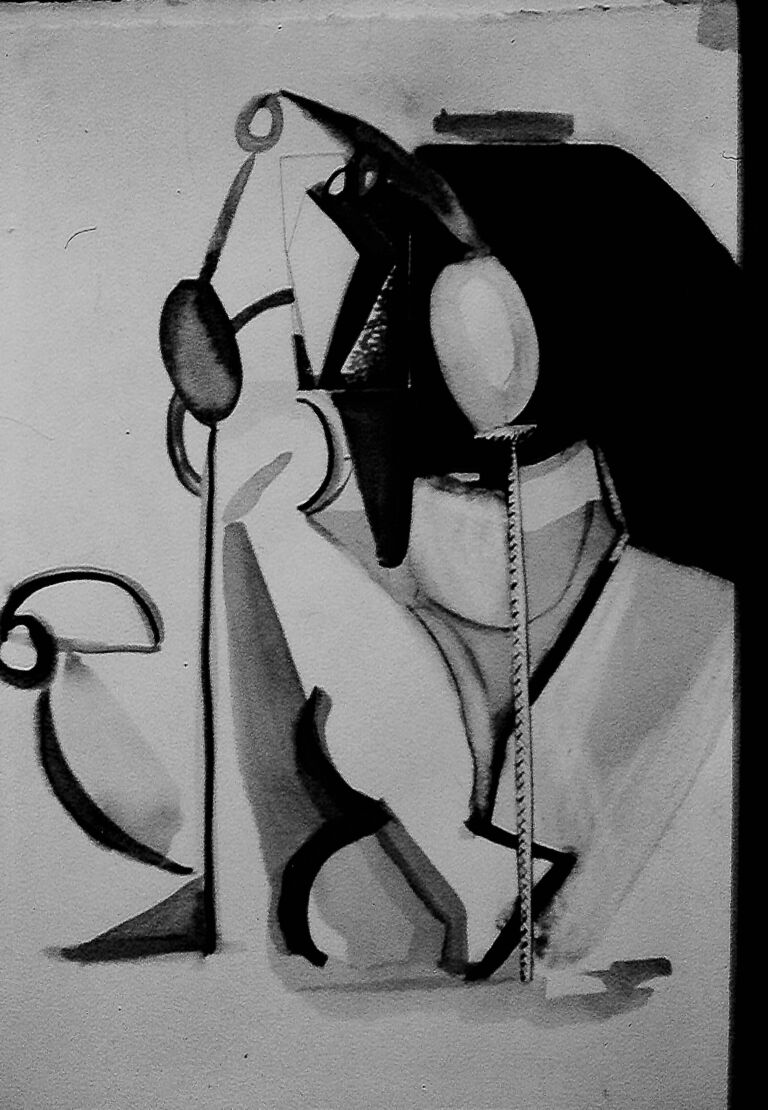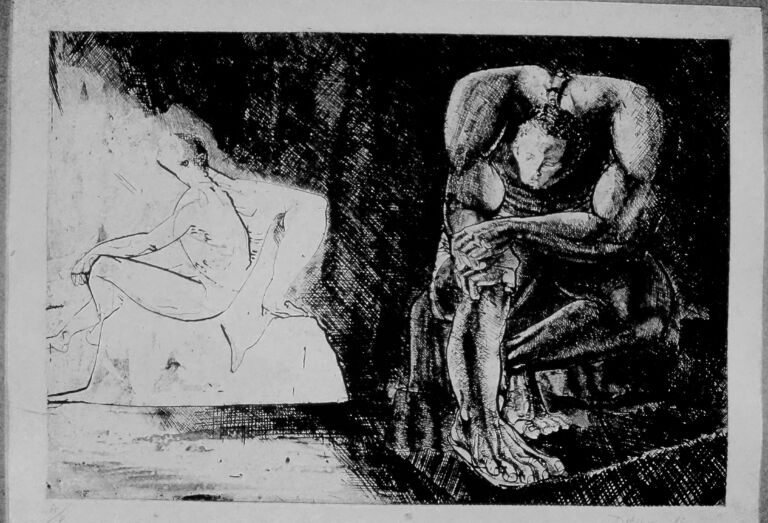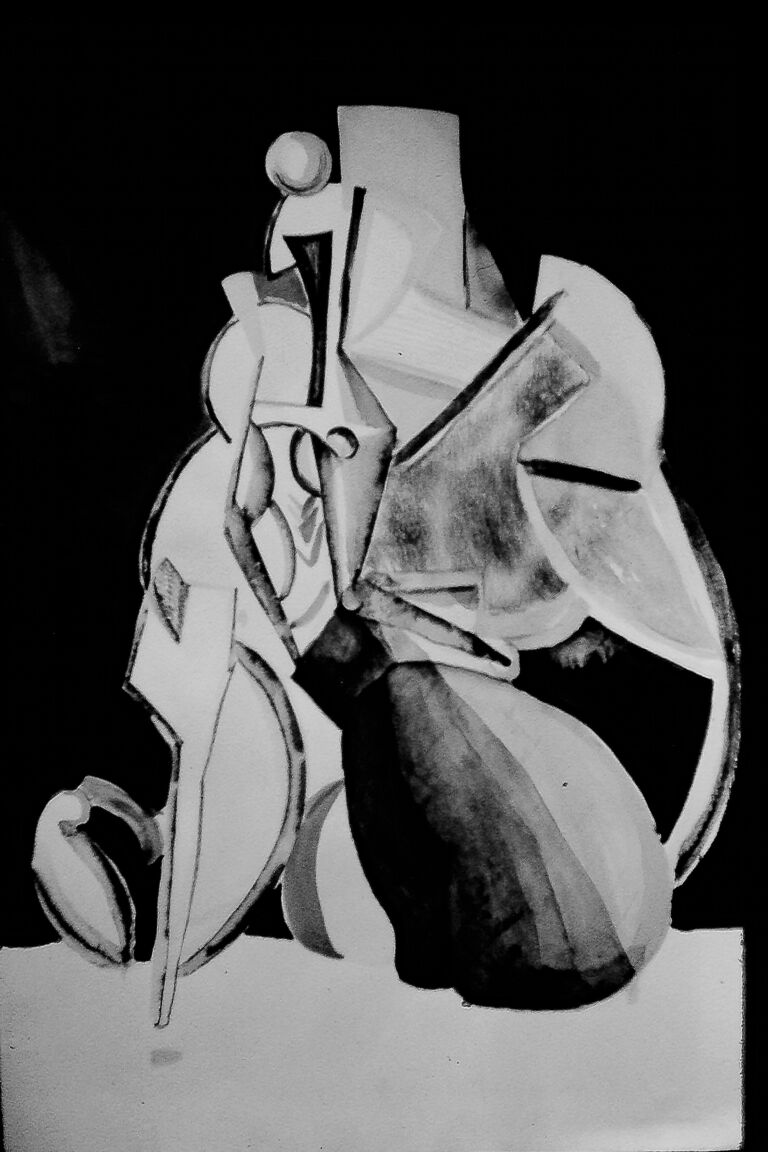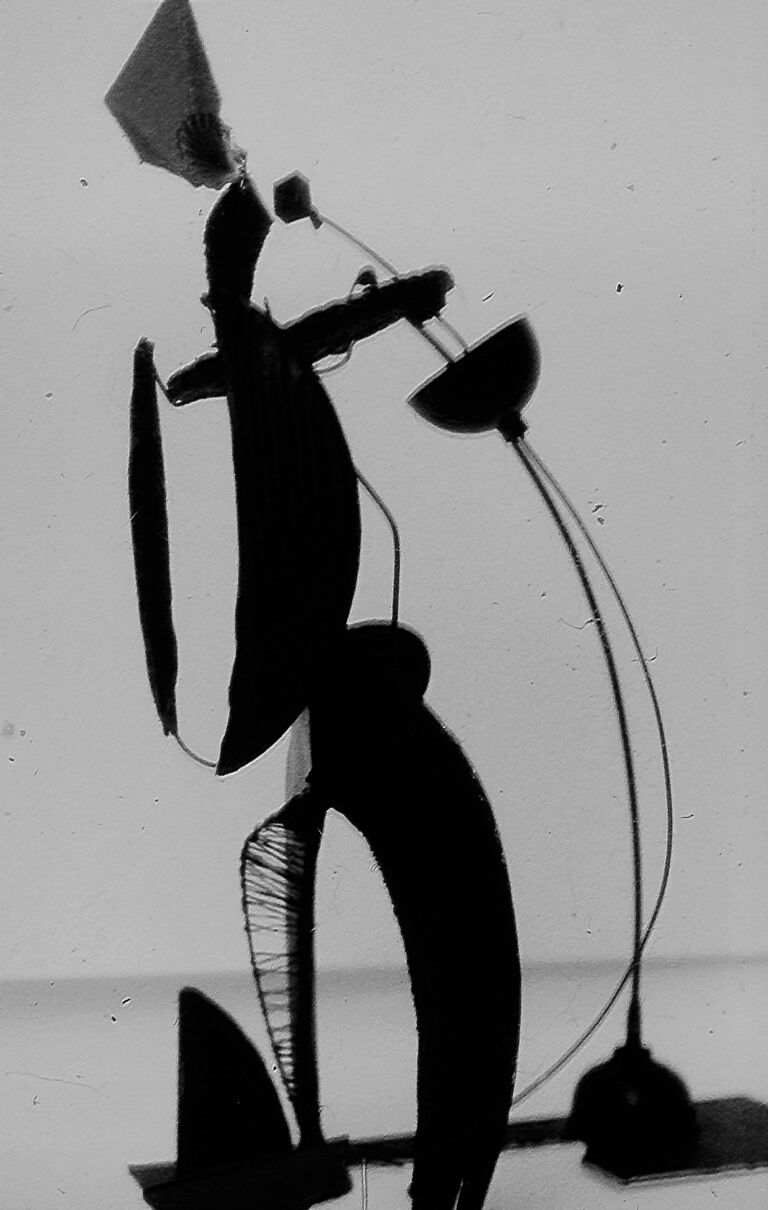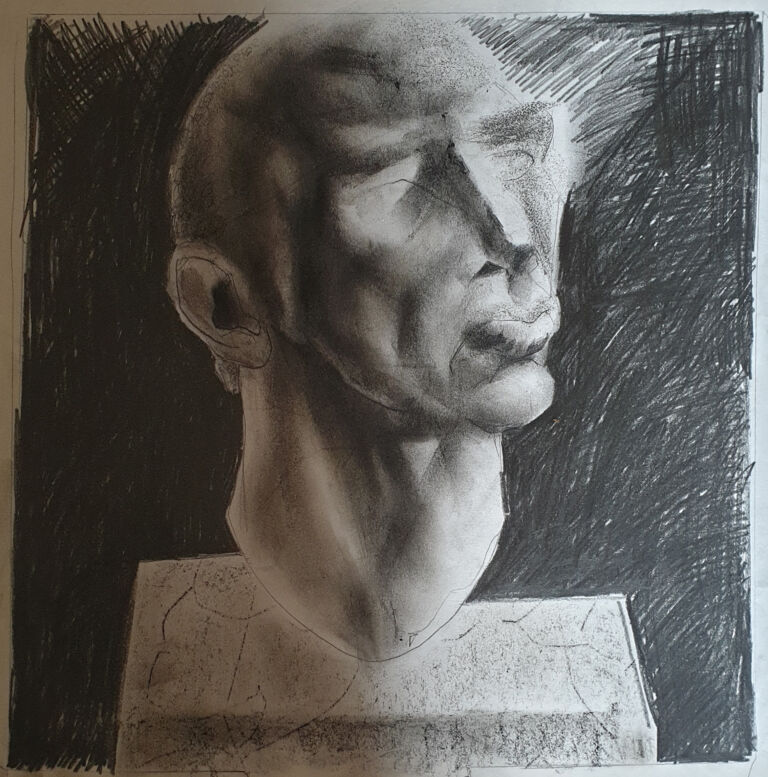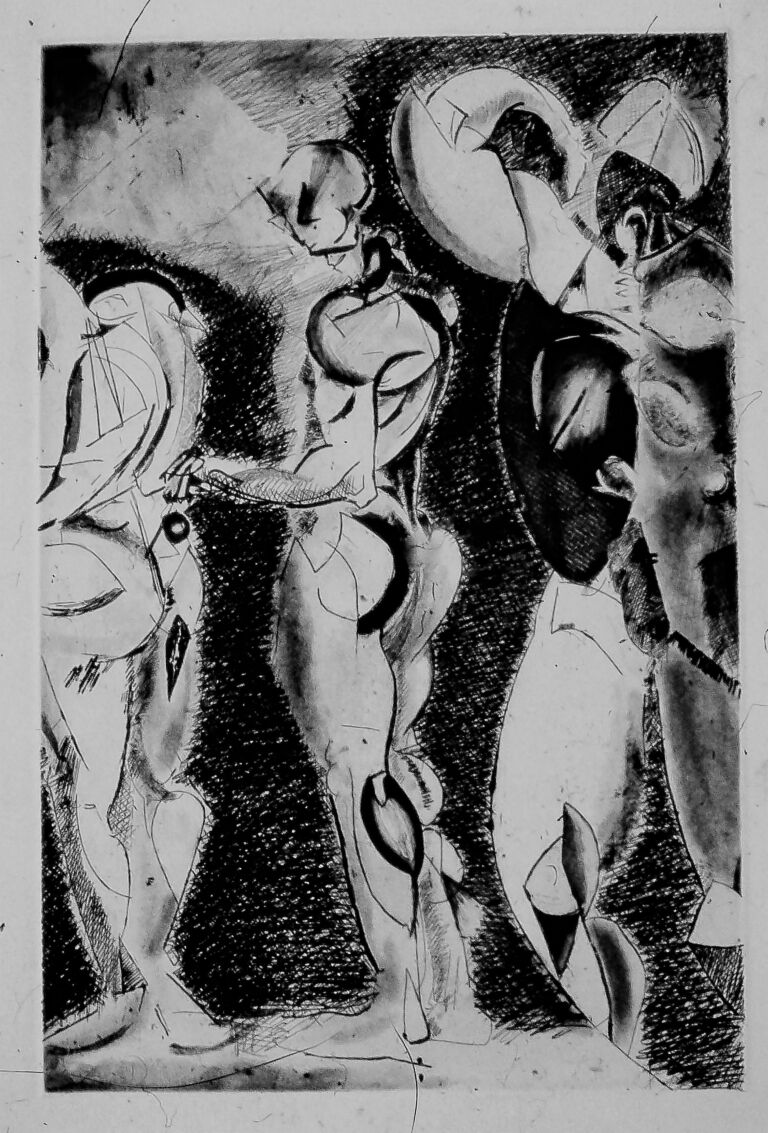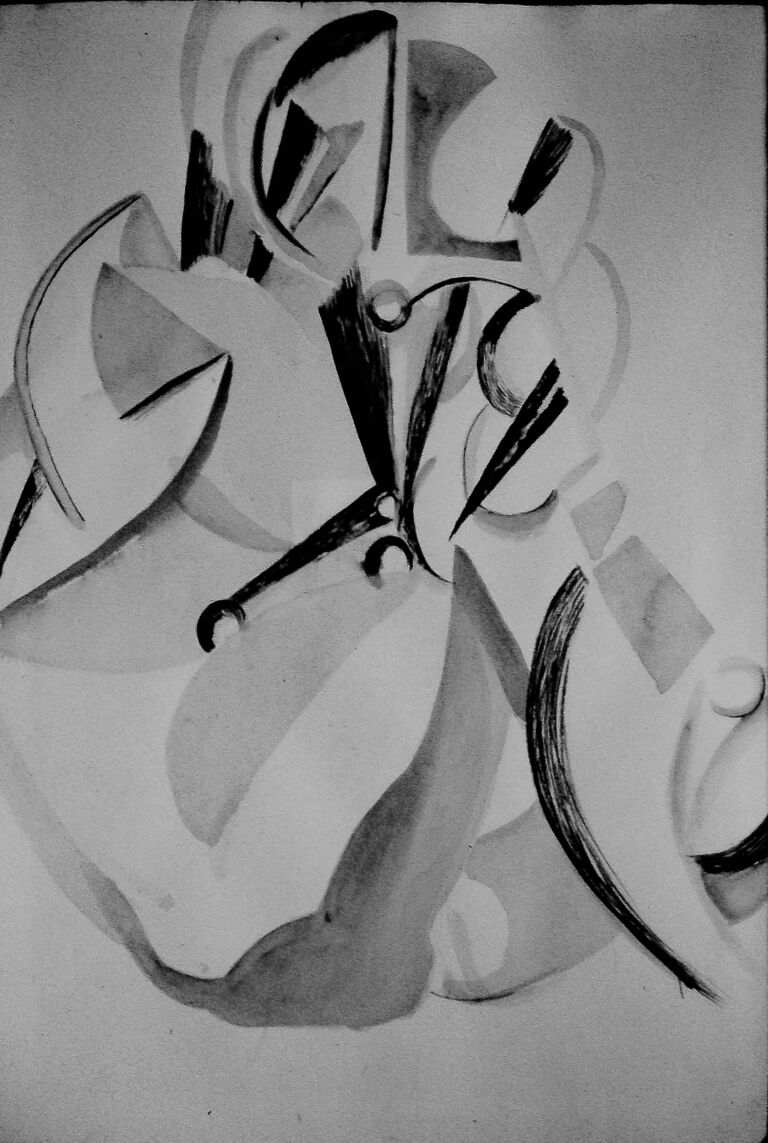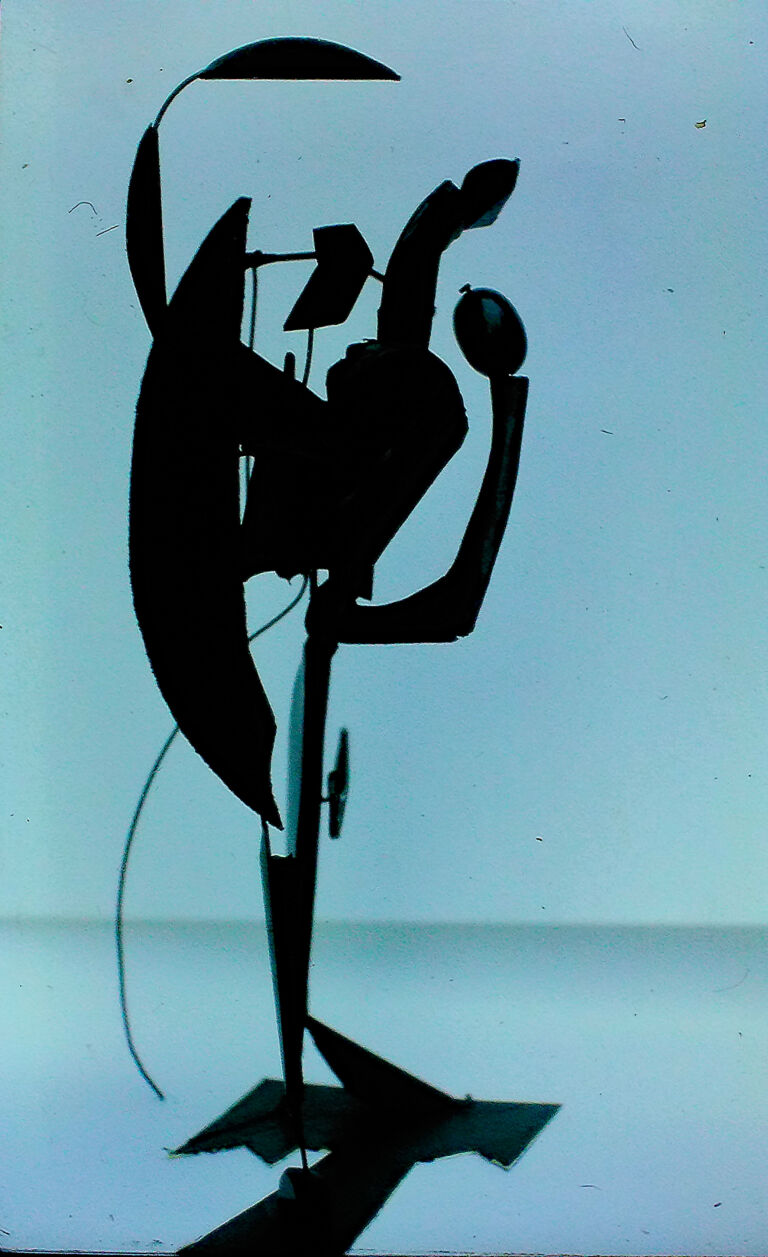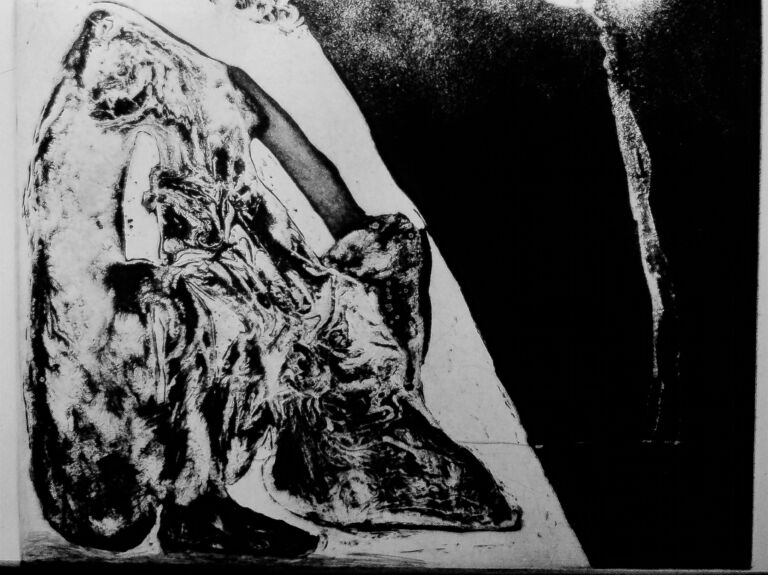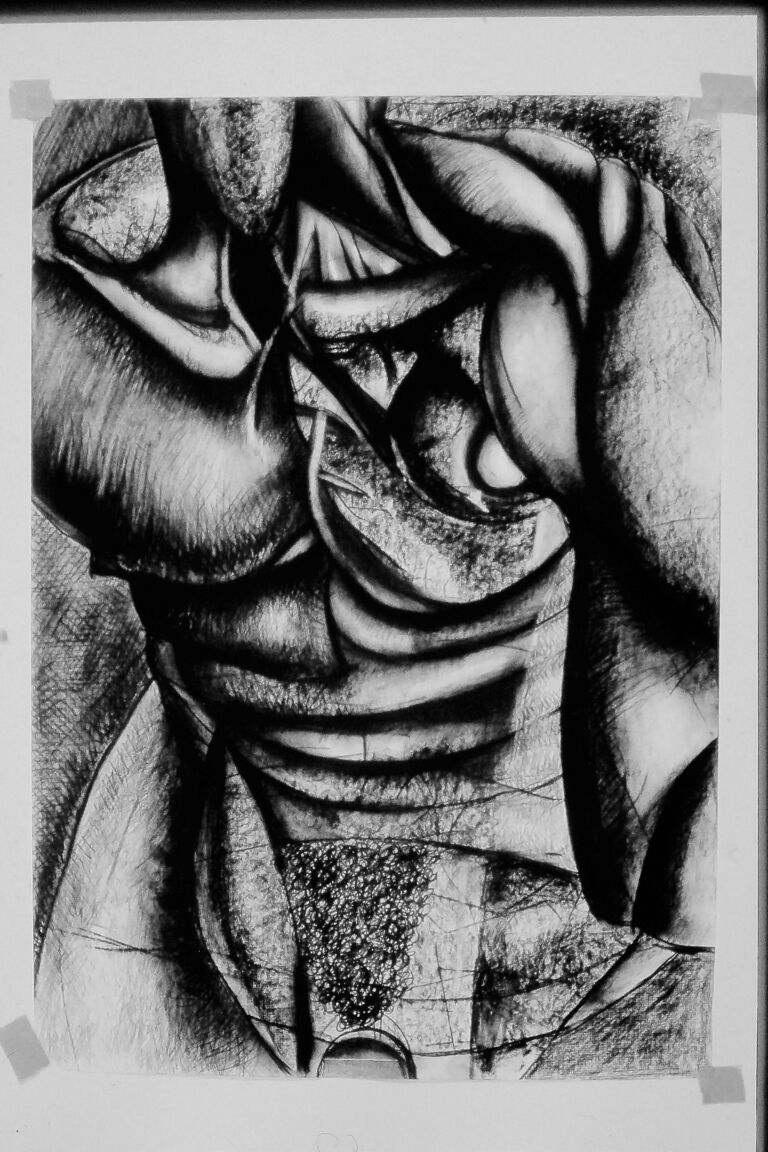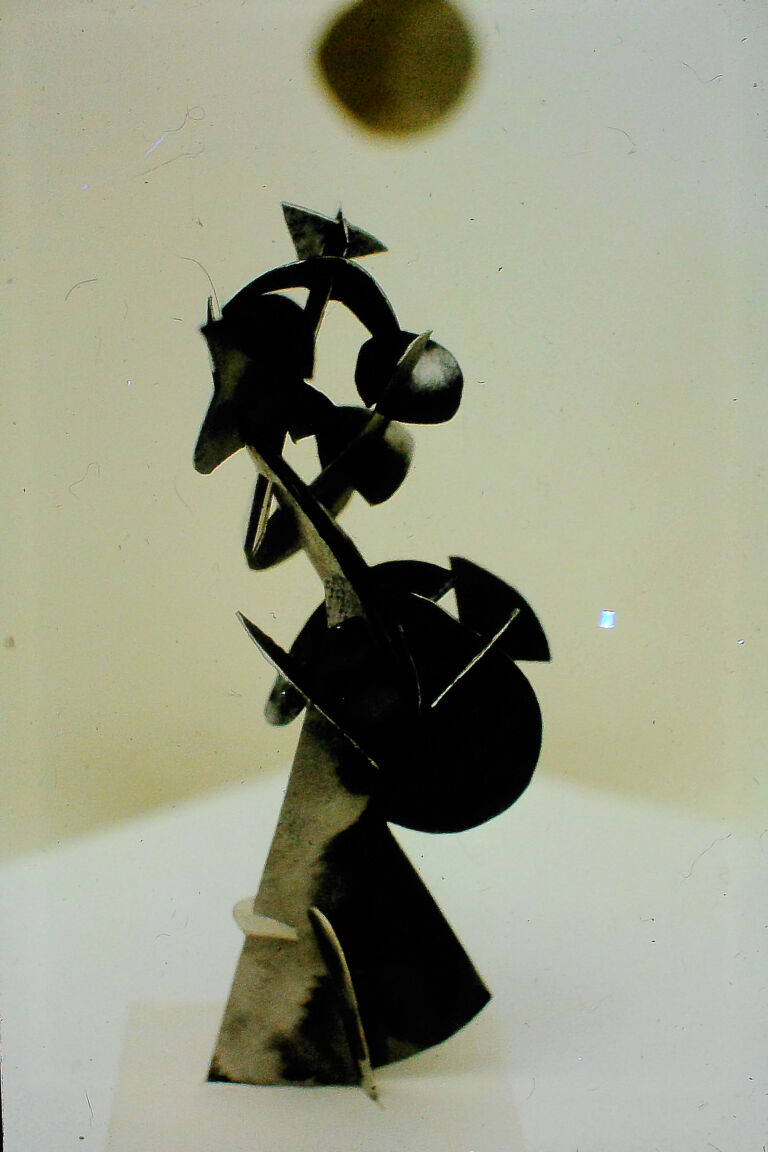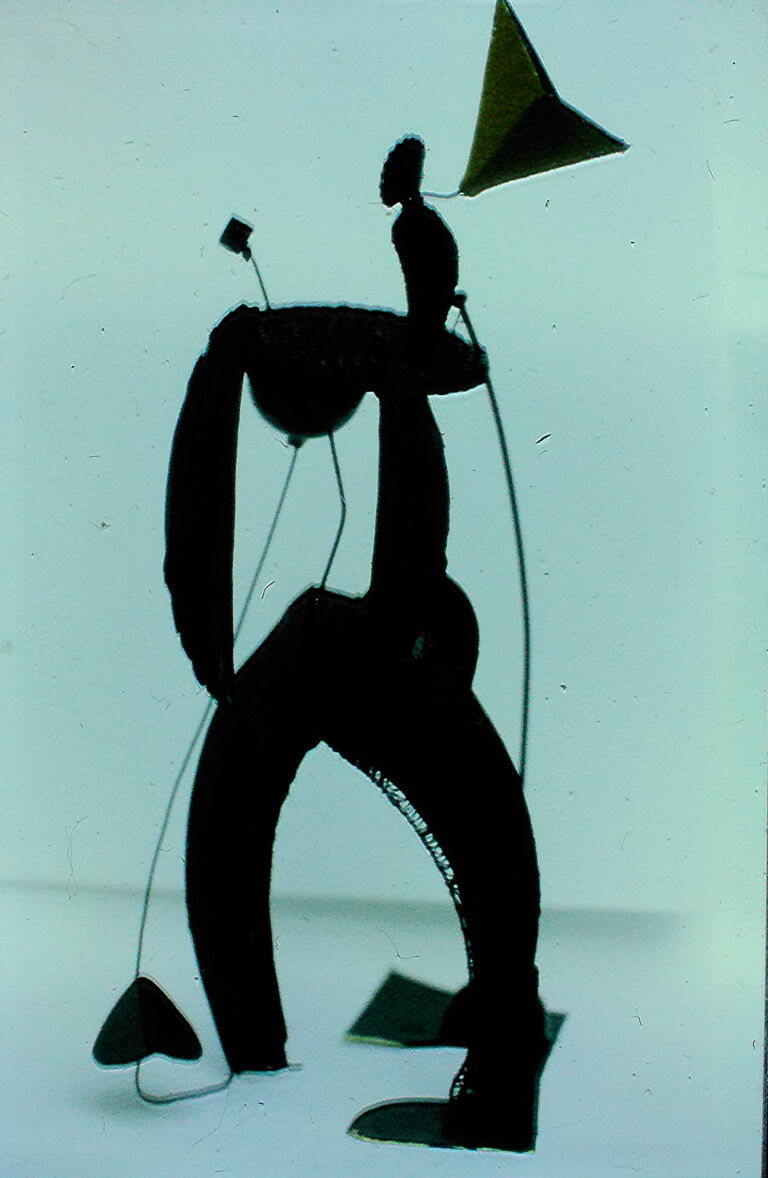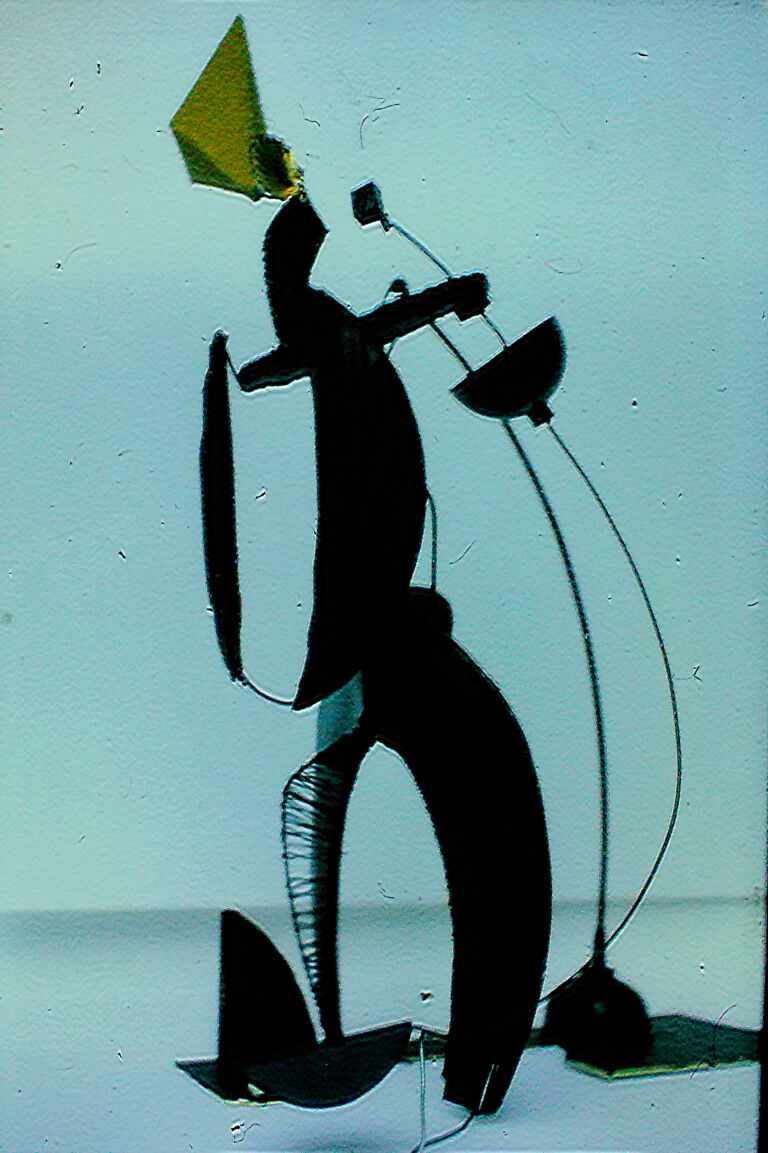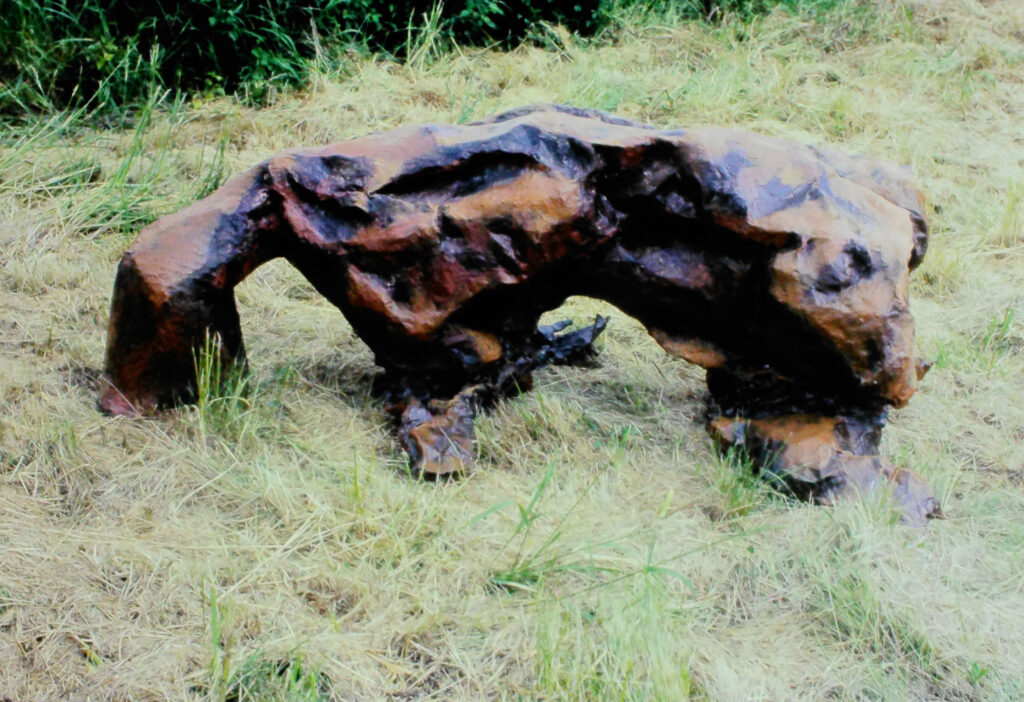Victory & Defeat
The Victory & Defeat series was established in 1982 while Hill was a postgraduate at the Royal College of Art (RCA), drawing inspiration from his earlier experiences as a competitive rower. The series debuted at the RCA in 1982 and was subsequently featured at Christie’s and the Imperial War Museum in 1983. Hill continued developing the project through a fellowship at the Artescape Trust in Lincoln and a residency at Bishop Grosseteste University, producing sculptures, prints, and drawings on the theme for further exhibitions.
Victory and Defeat opened as a public exhibition at the Imperial War Museum in London in 1983, showcasing Derek Hill’s etchings and drawings from the series. The exhibition also marked the museum’s acquisition of Hill’s etching titled “Victory and Defeat.”
The collection includes suites of etchings on zinc, copper, and steel plates, as well as lithographs and charcoal drawings. Plate sizes are 30 x 30 cm, 30 x 50 cm, and 45 x 75 cm. Offset lithographs consist of four plates, each measuring 1.25 x 1.5 m. Several small painted wooden and metal maquette sculpture studies celebrating victory are also included. “Victory and Defeat” (1982–1984) is a project by Hill featuring a collection of etchings, lithographs, drawings, and sculptures. First exhibited at the Royal College of Art (RCA) in 1982, it was later shown at Christie’s in London during their inaugural New Graduate Art exhibition in 1983. In 1983/84, Hill was invited to display part of “Victory & Defeat” at the Imperial War Museum, one of the world’s most renowned institutions. The museum acquired works from this series for its public collection. The project employs traditional printmaking and drawing techniques to explore the historical narrative of gladiatorial warriors, depicted as classical Greek statues in both pre- and post-battle poses. It delves into universal themes of triumph and loss. The small sculptural studies are symbolic, echoing Greek Parthenon works like The Victory of Samothrace and images of fallen heroes, as well as notable references such as the Hermes Ludovisi statue in Athens and a Roman sculpture of Spartacus. All figures in Hill’s tableaux are intentionally rendered as imposing Greek or Roman statues in exaggerated poses, emphasising the gladiatorial spirit and a sense of invincible, godlike superiority over adversaries. Historically, such representations have served as battle cries for warriors. The theme of “Victory and Defeat” is staged and theatrical, intended to engage viewers through a strong visual concept. Each scene defines its narrative, with secondary characters supporting the central figures.
